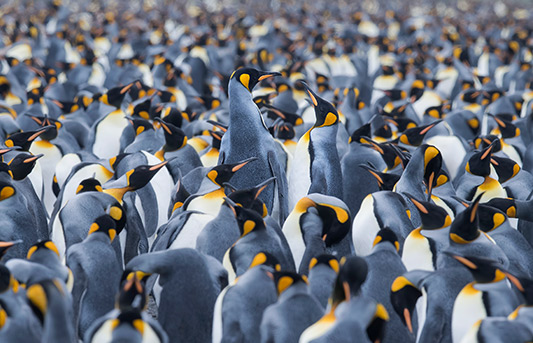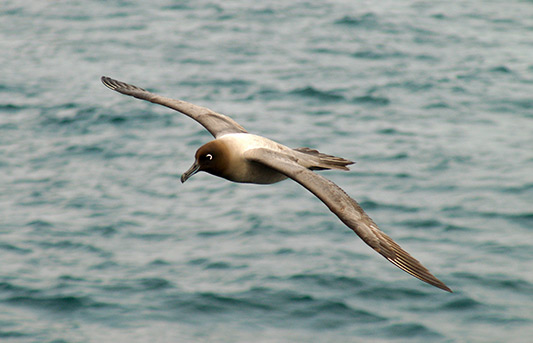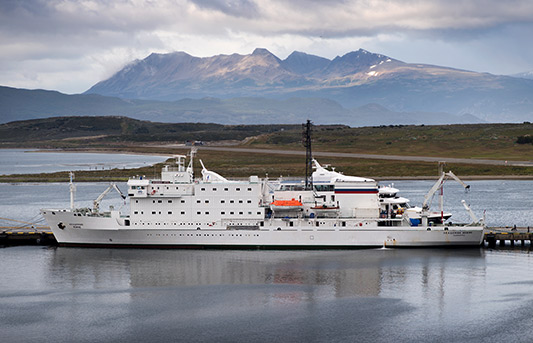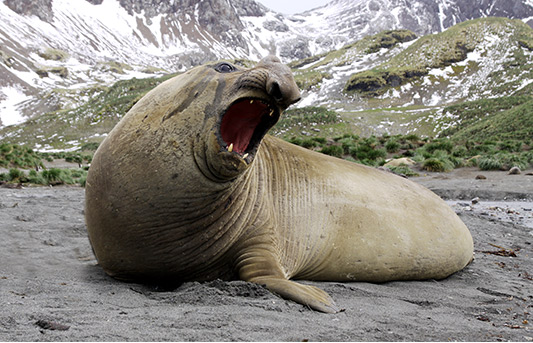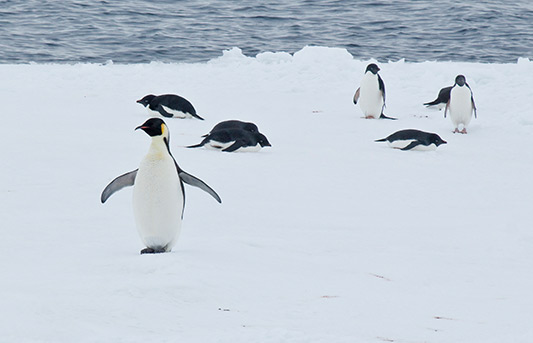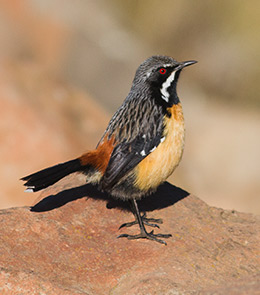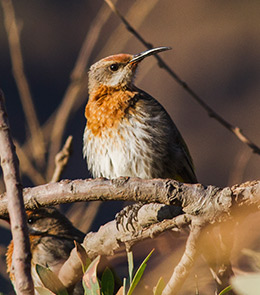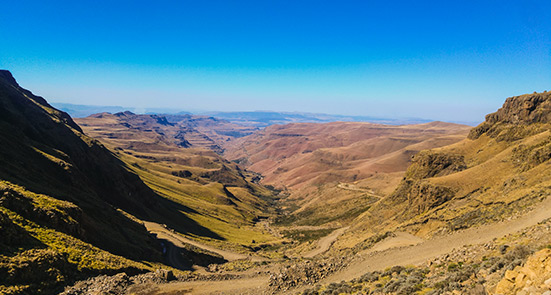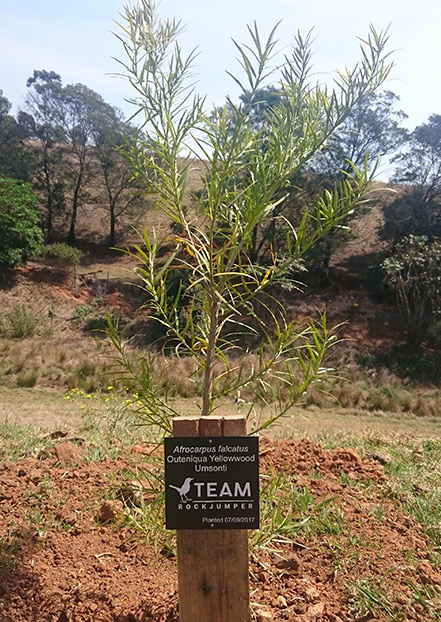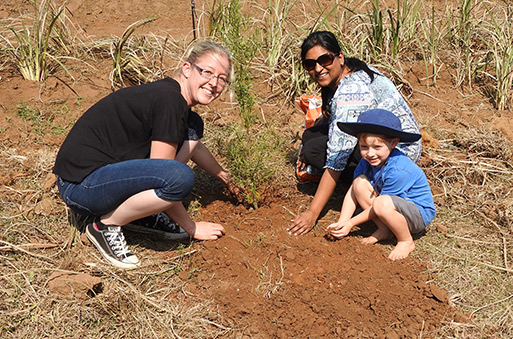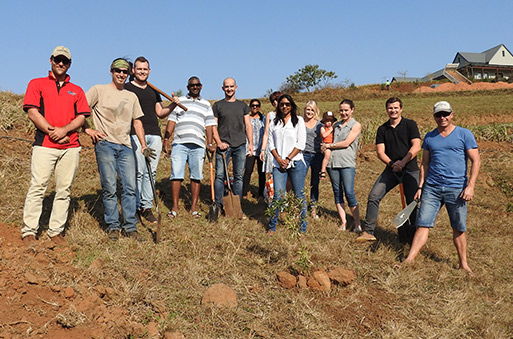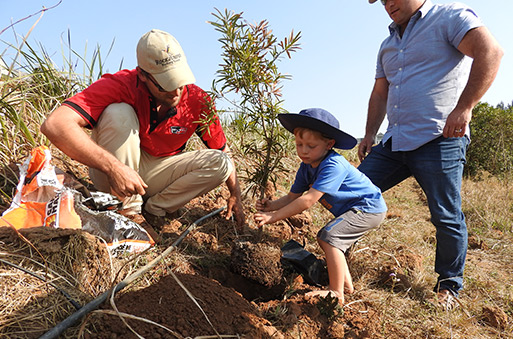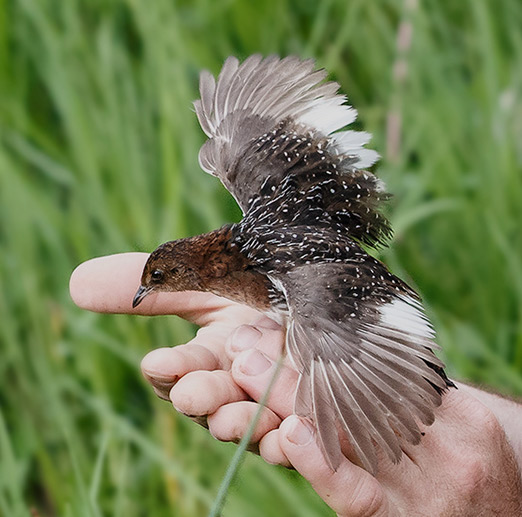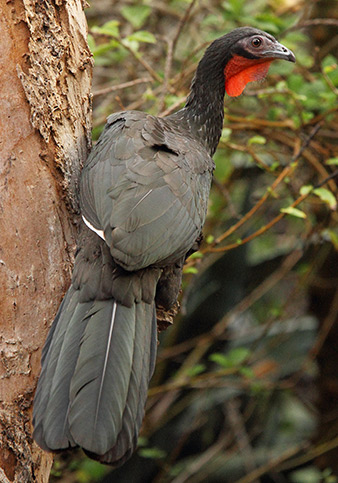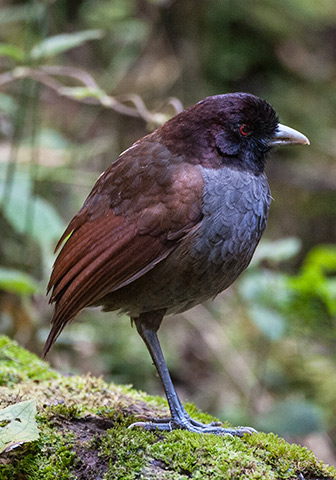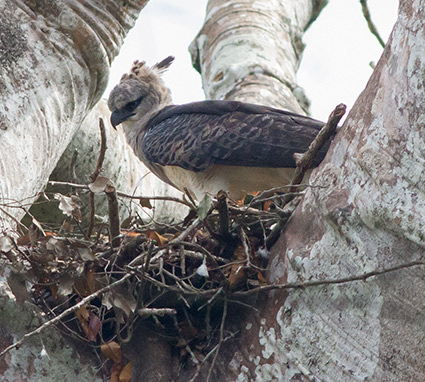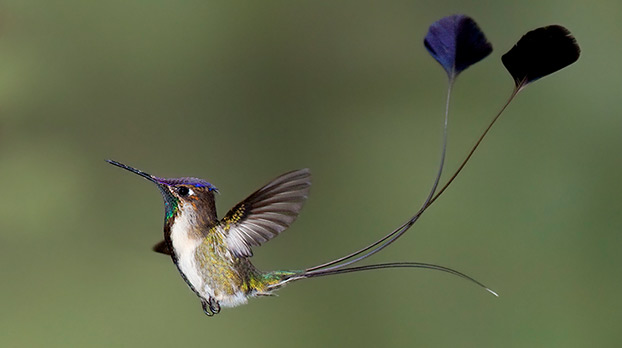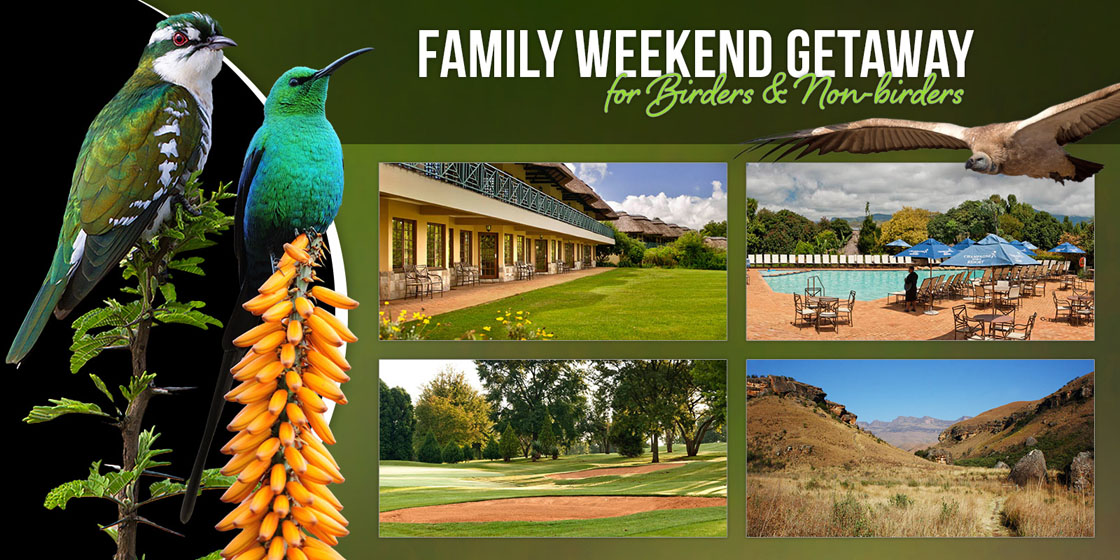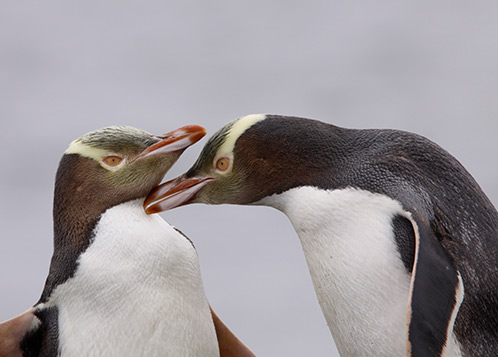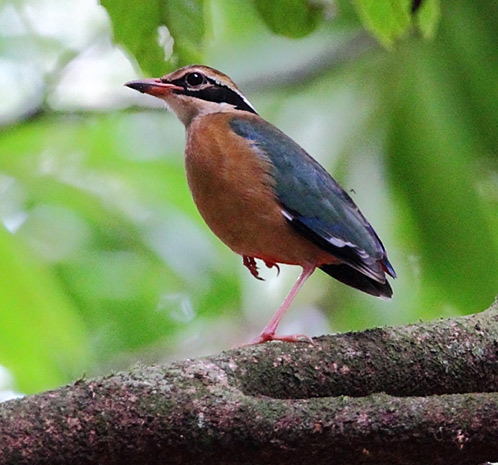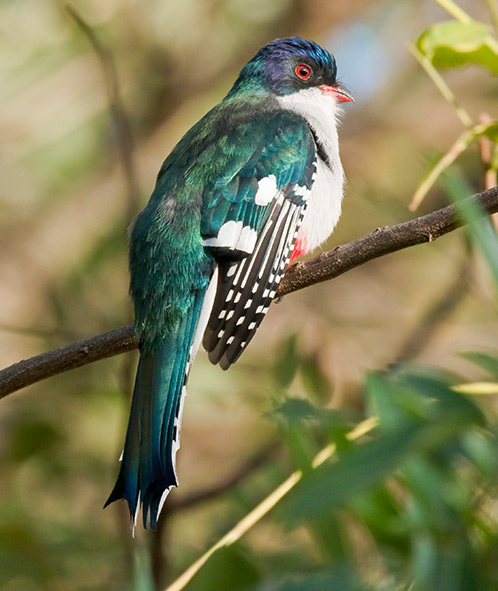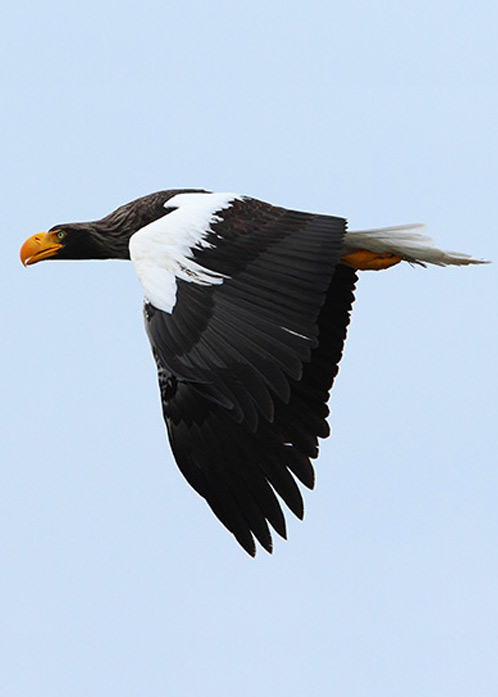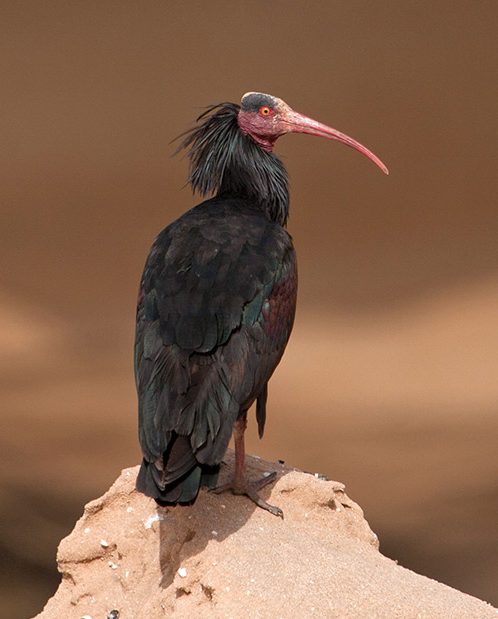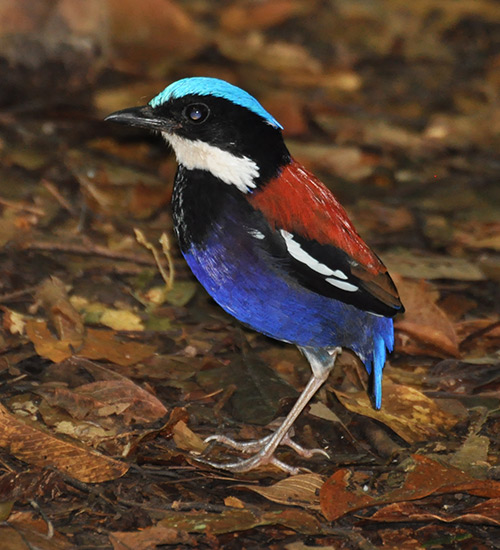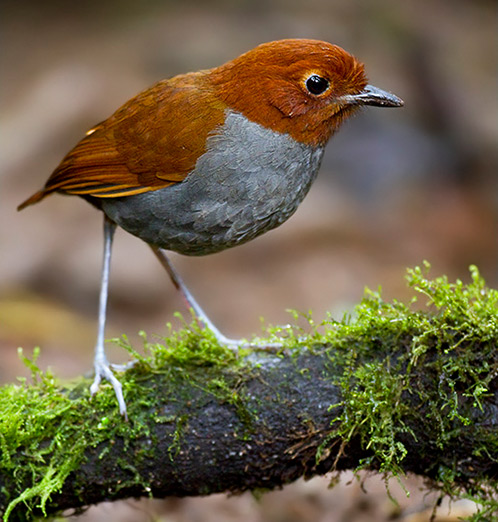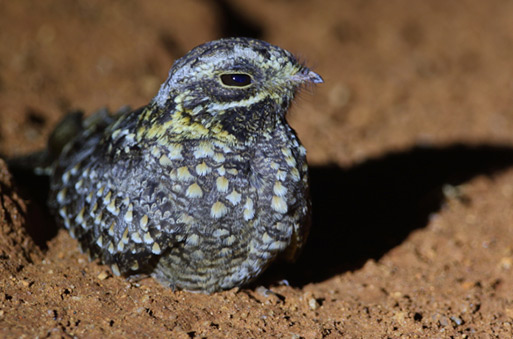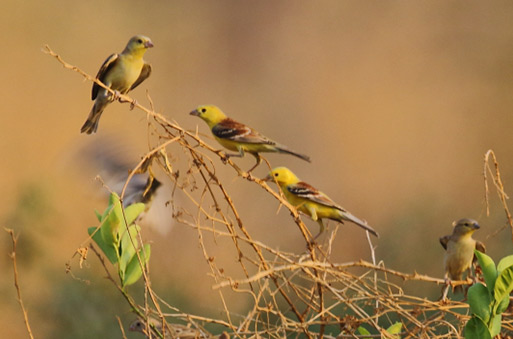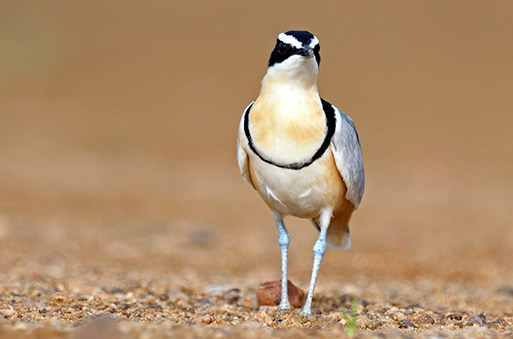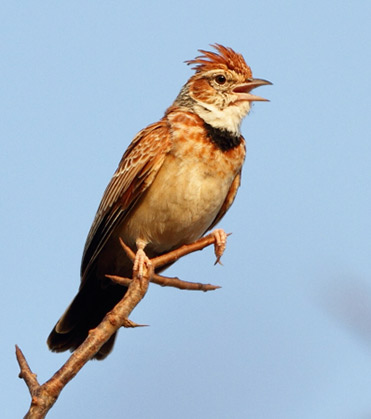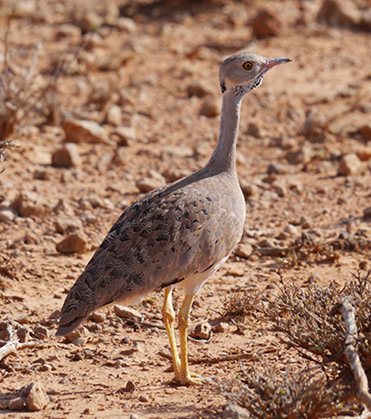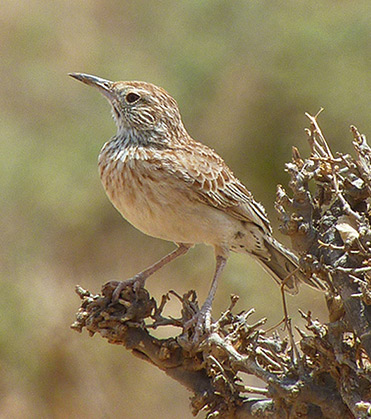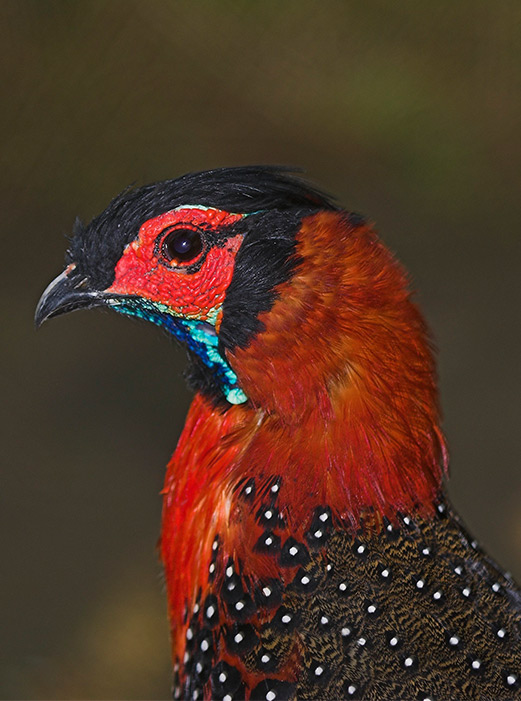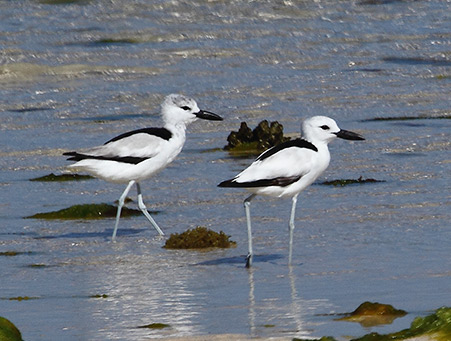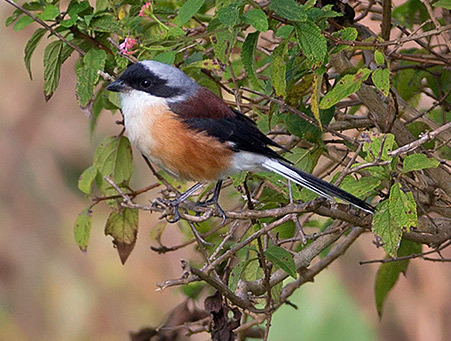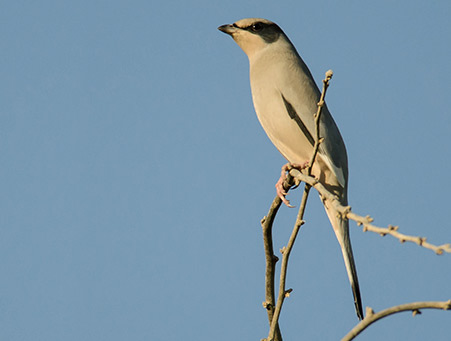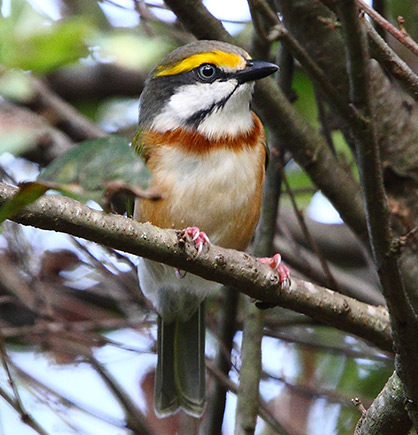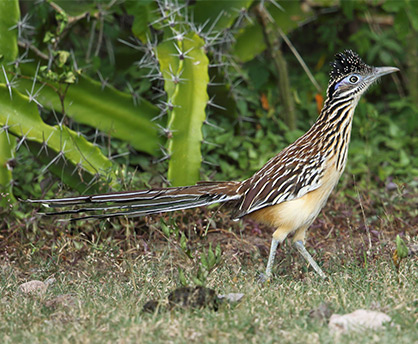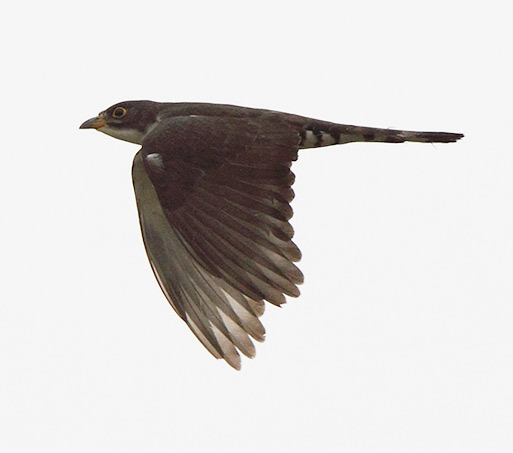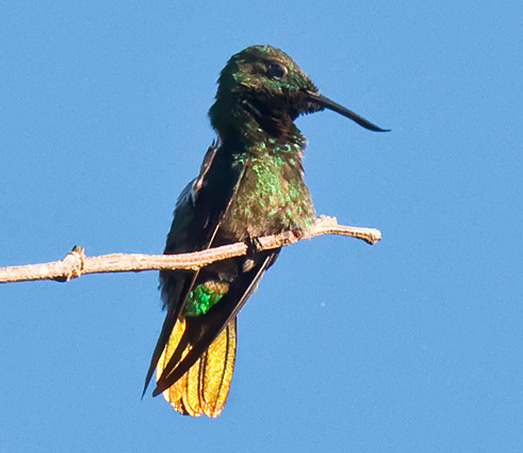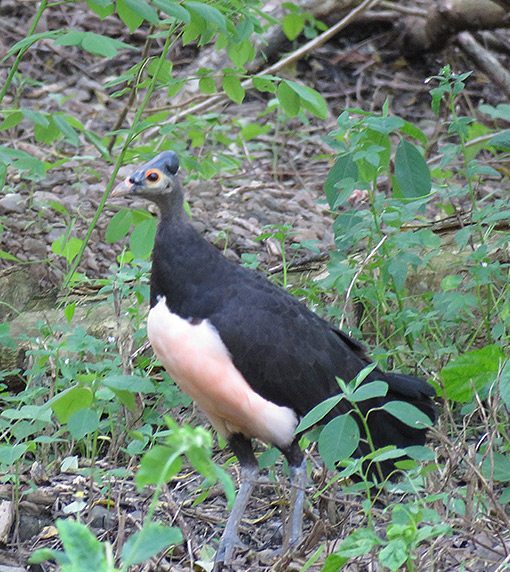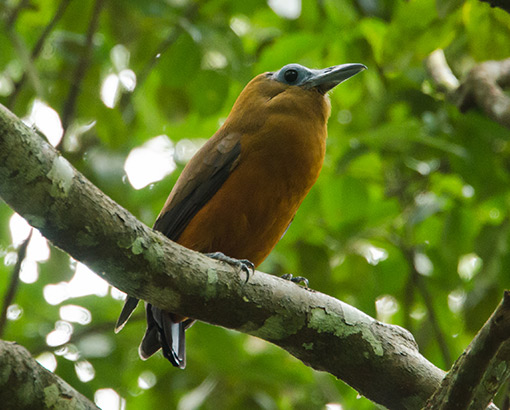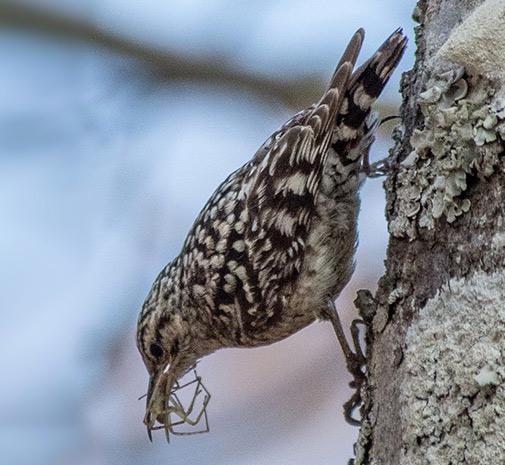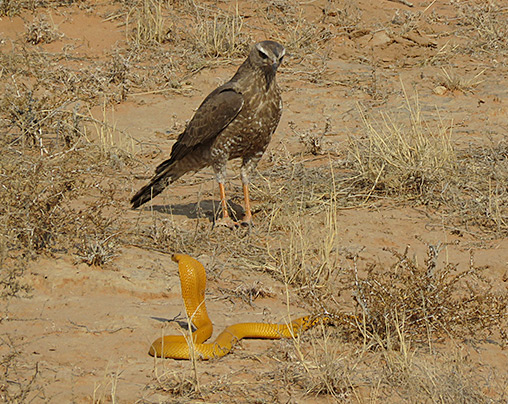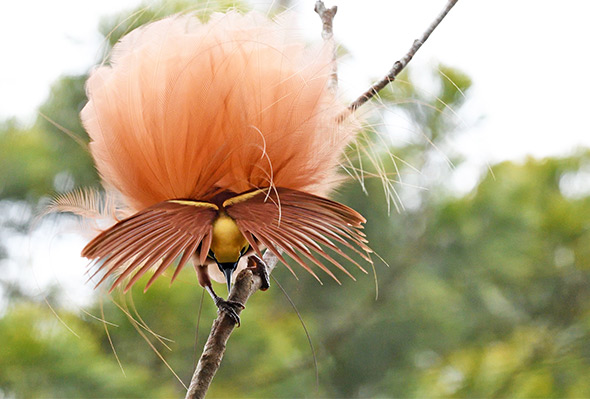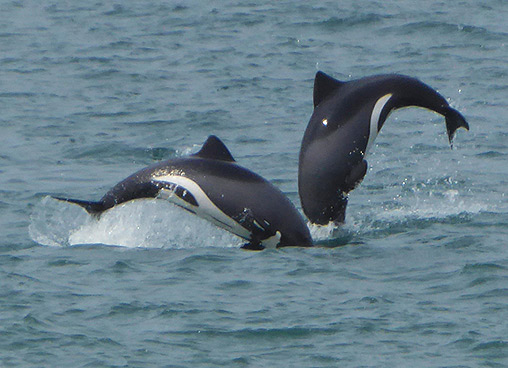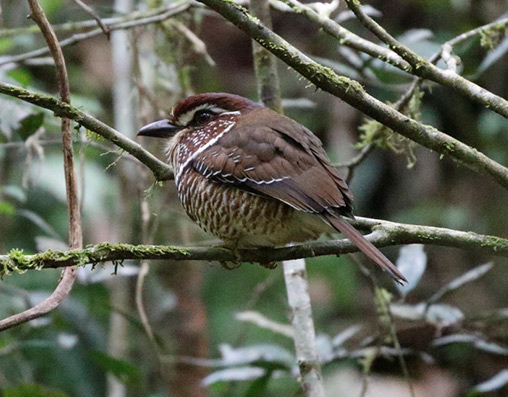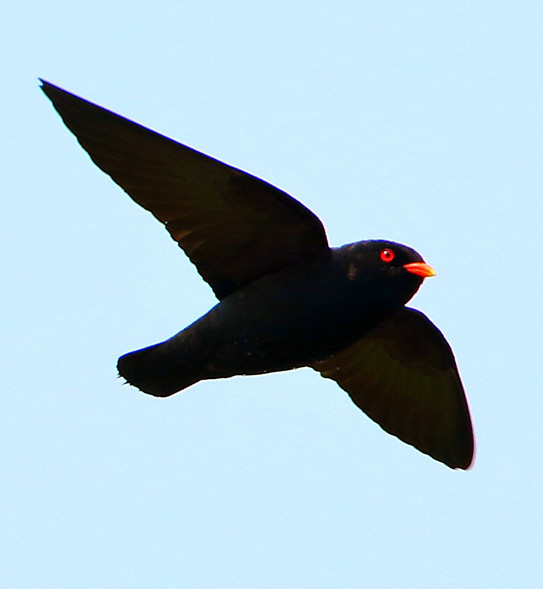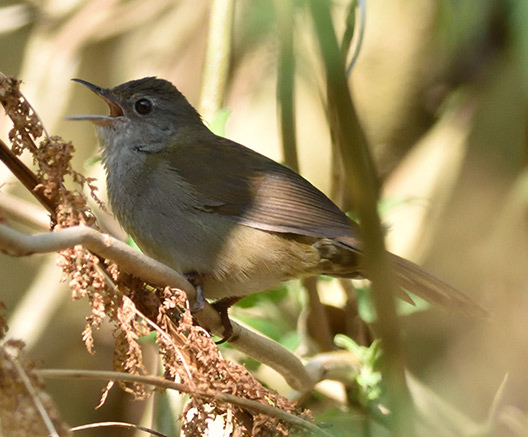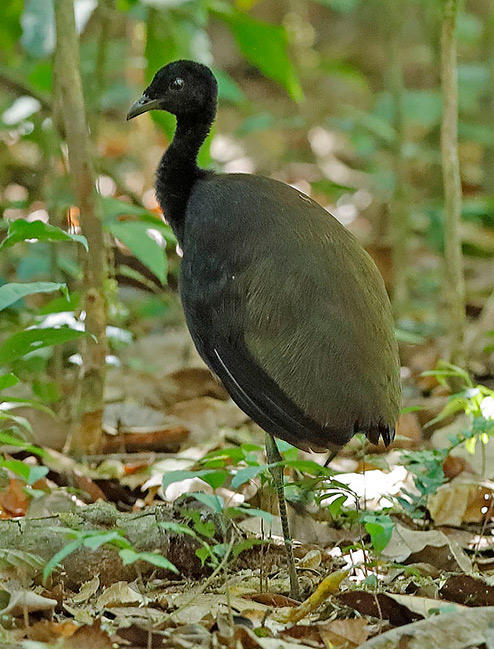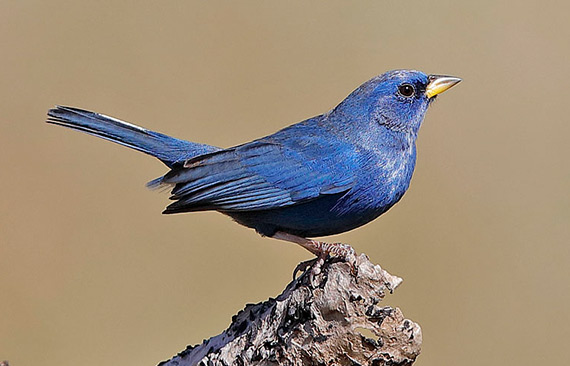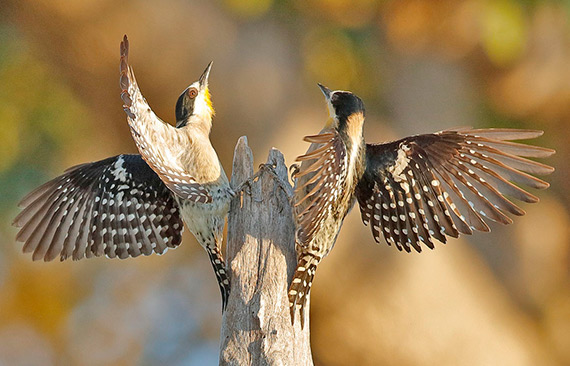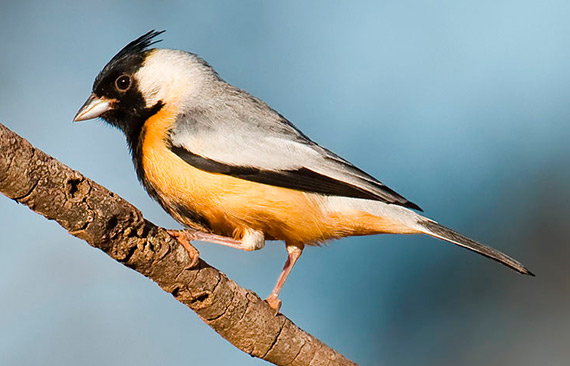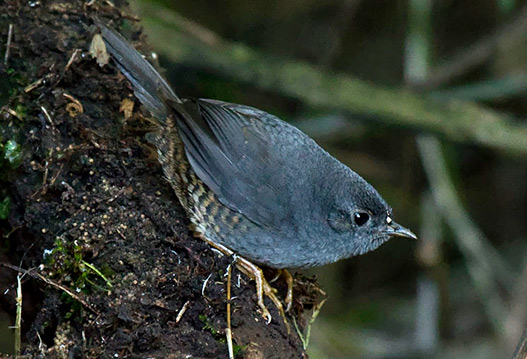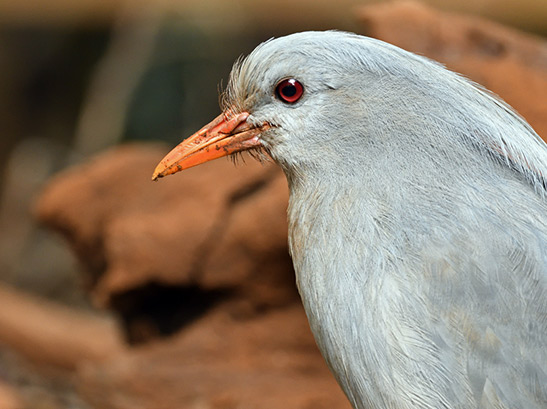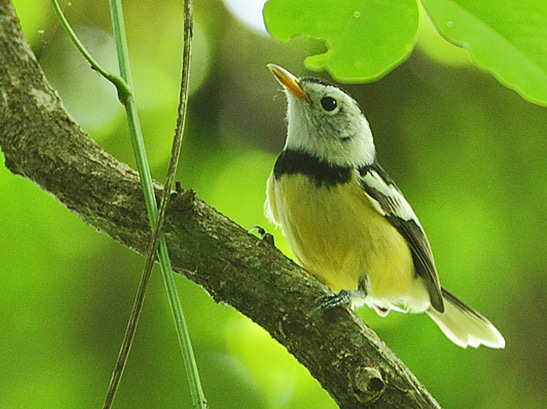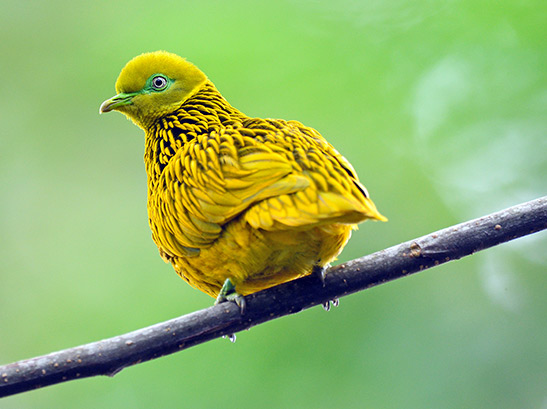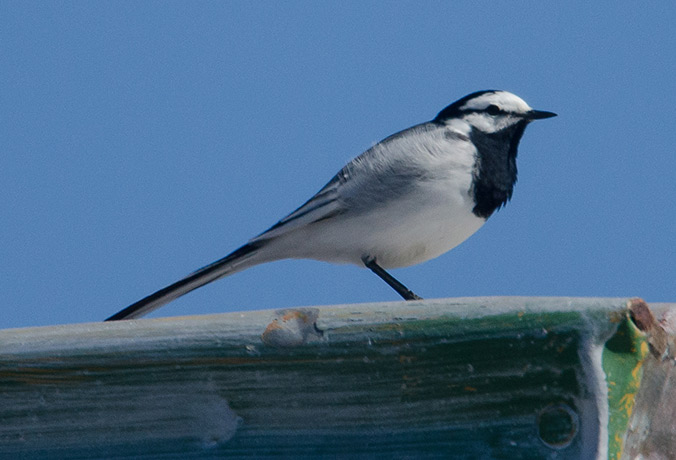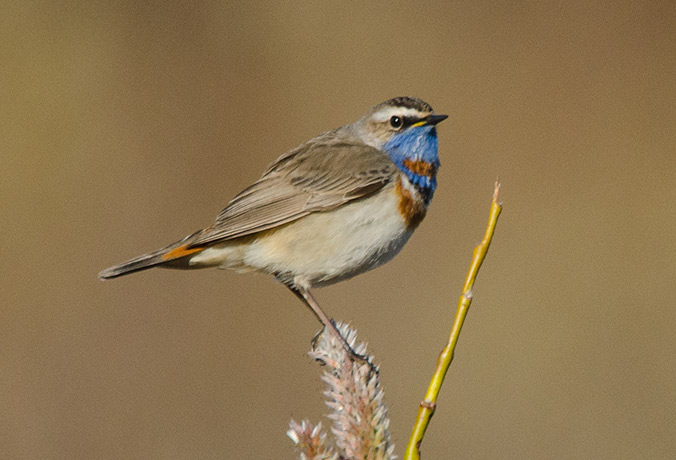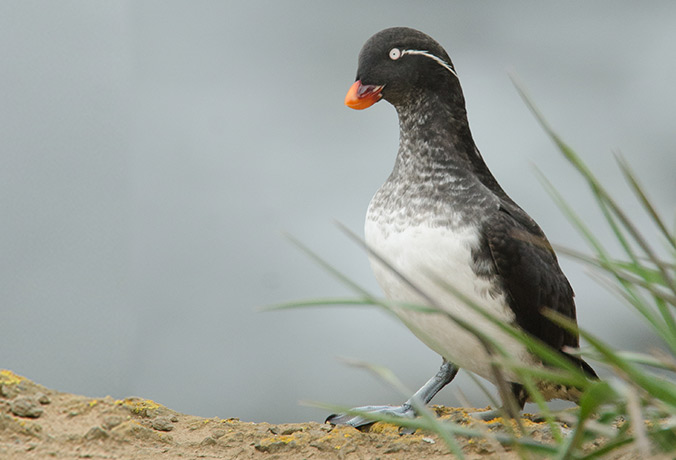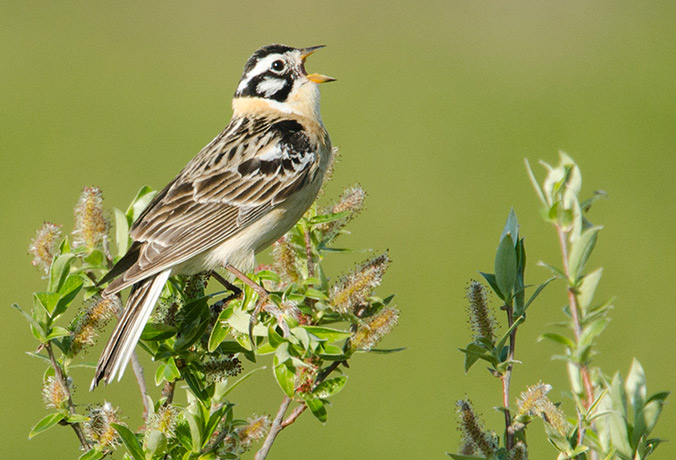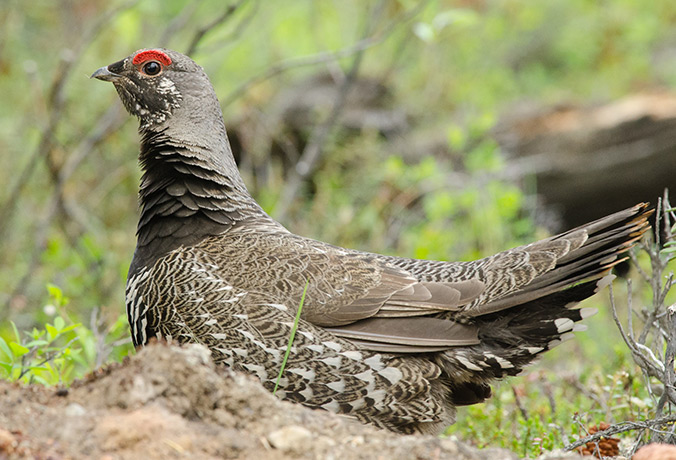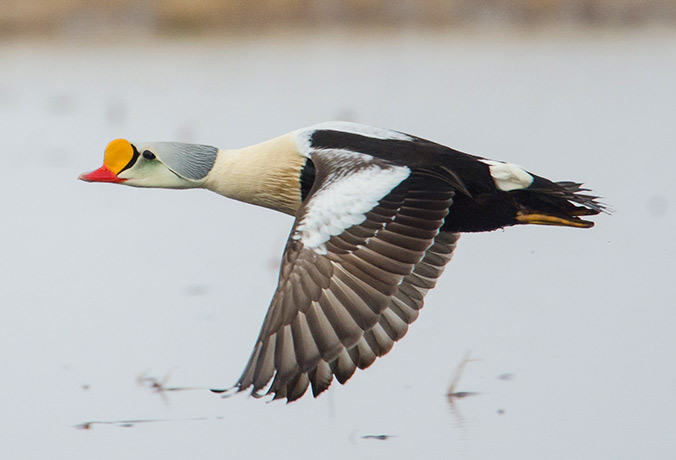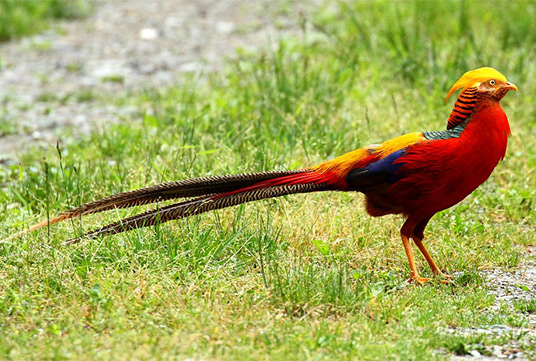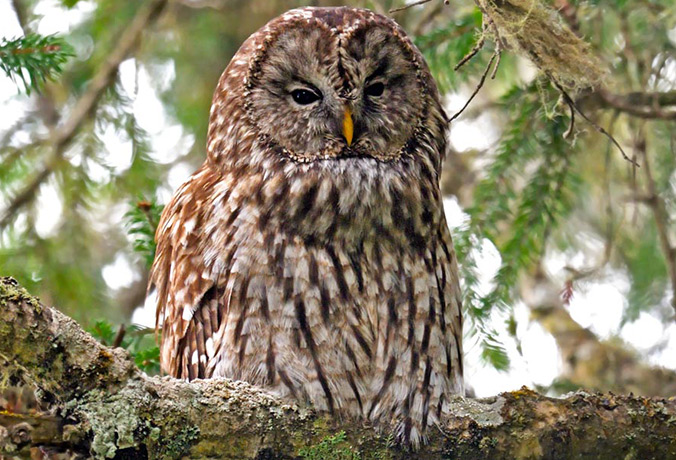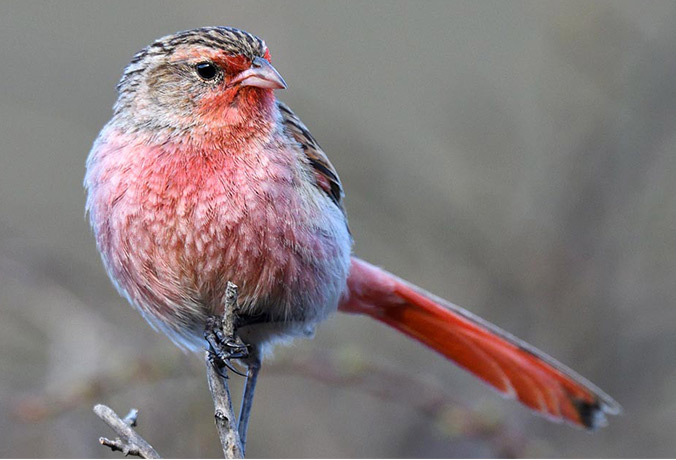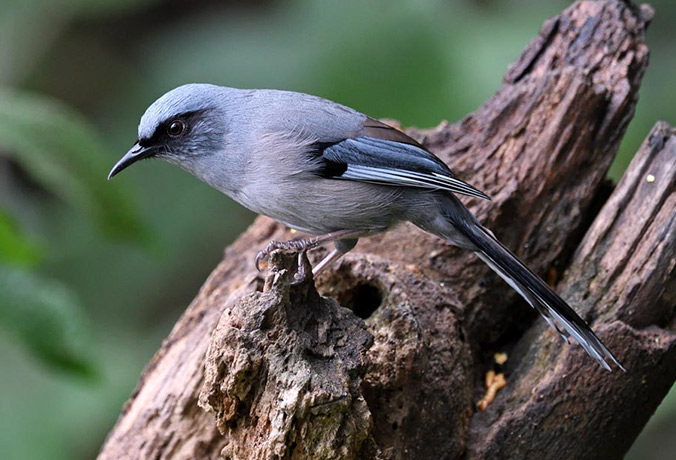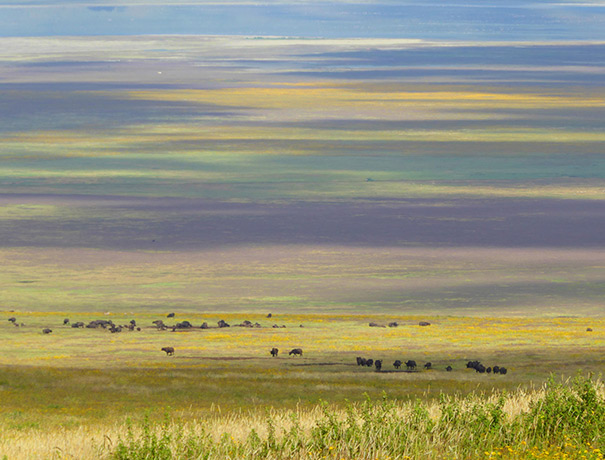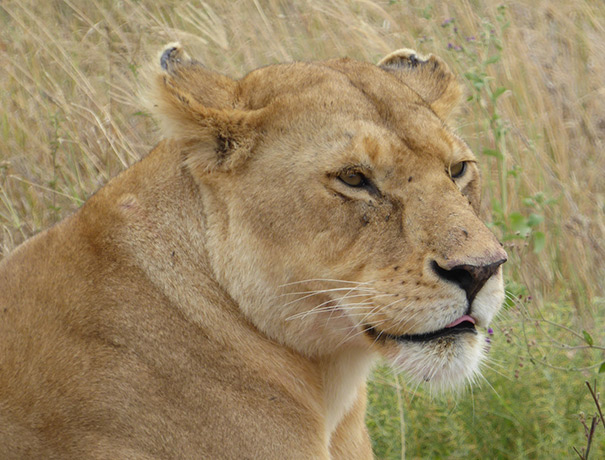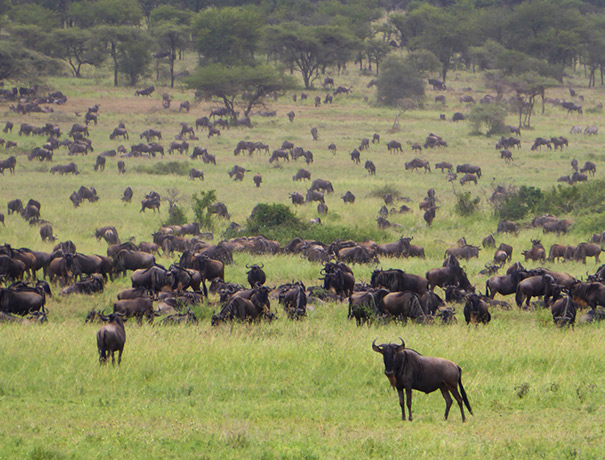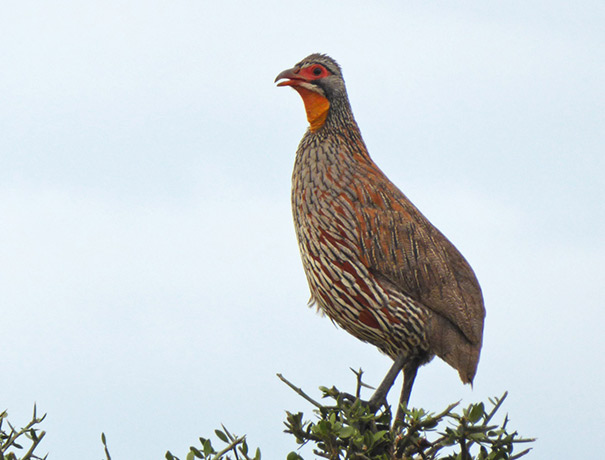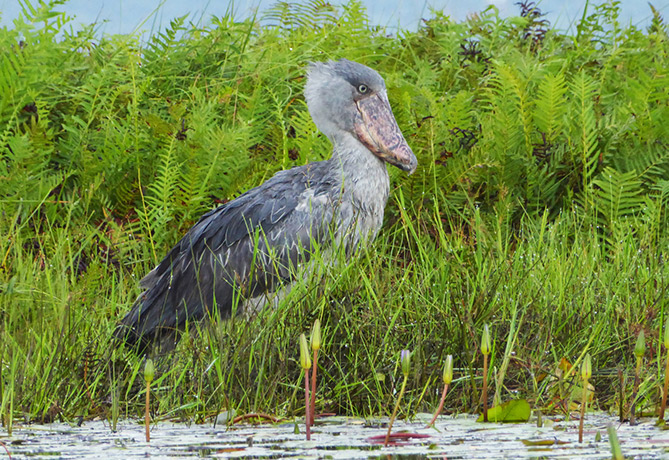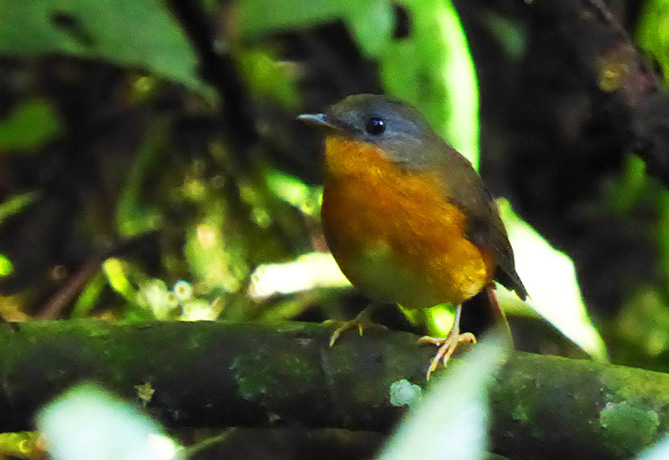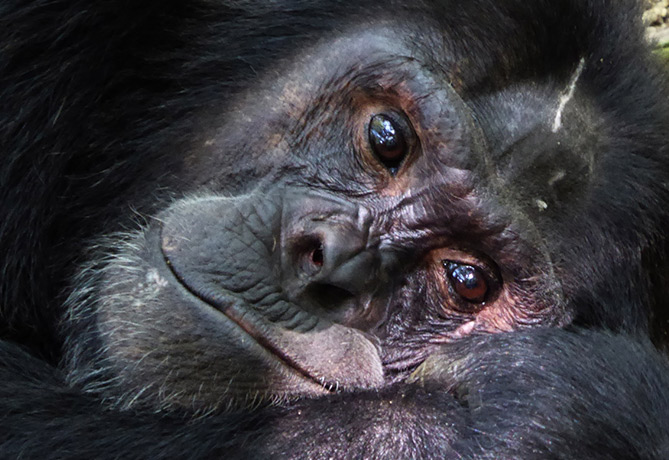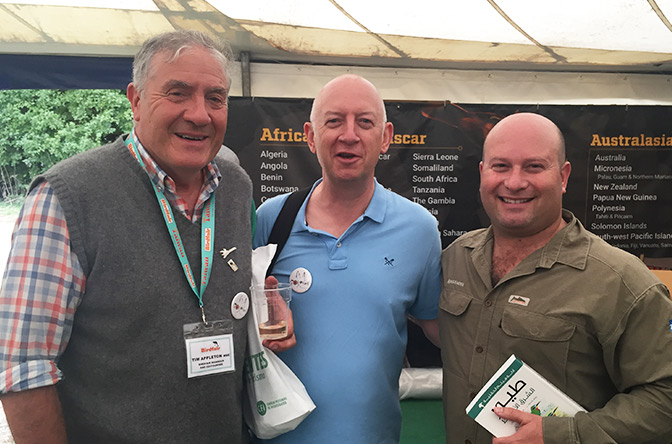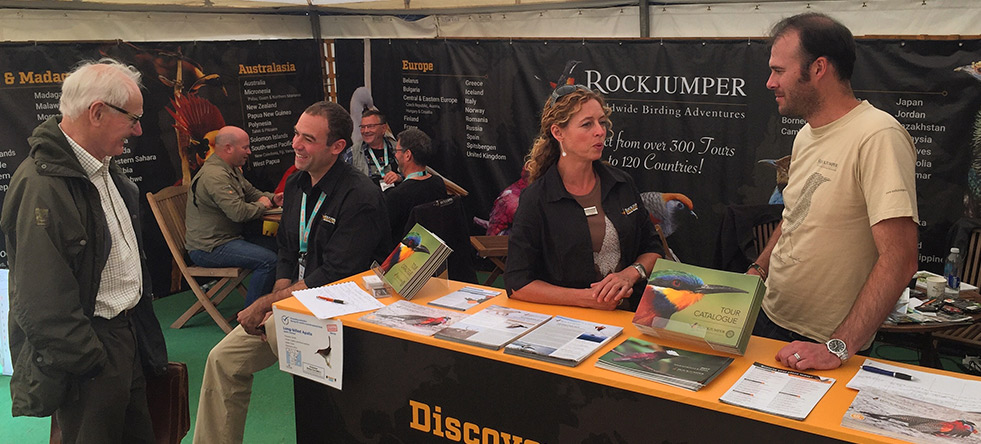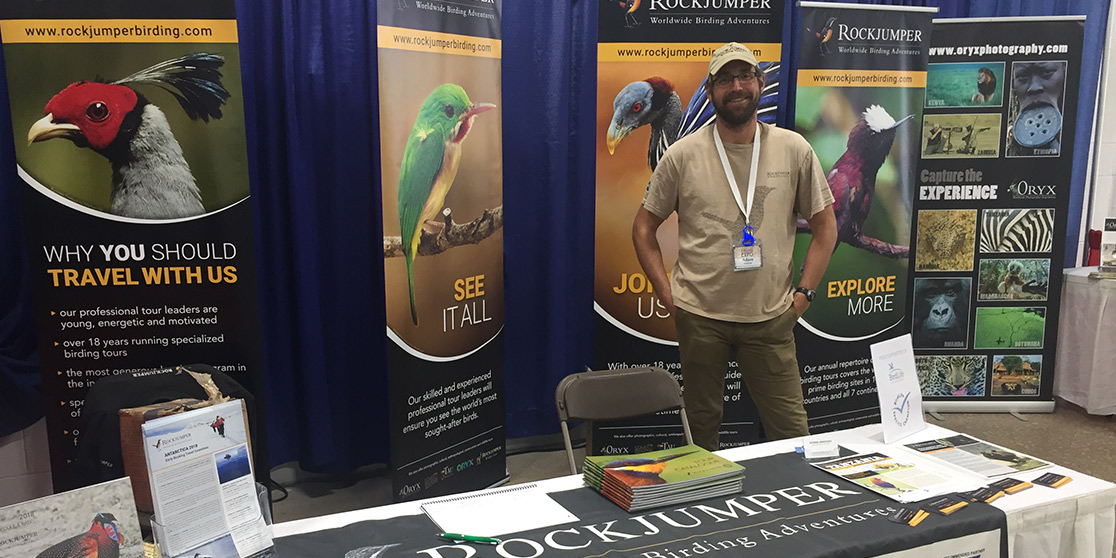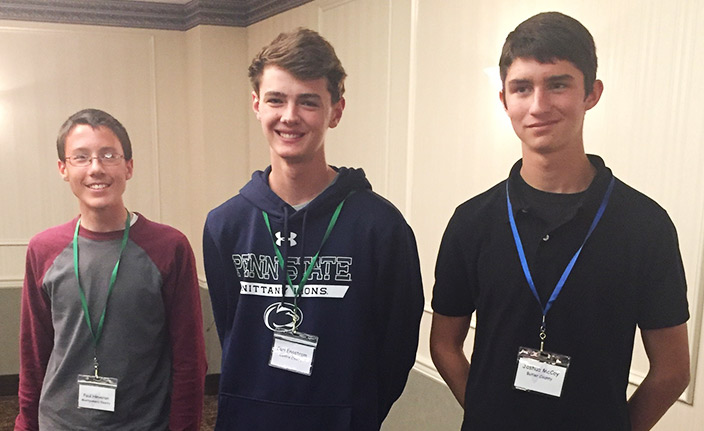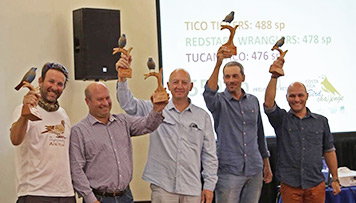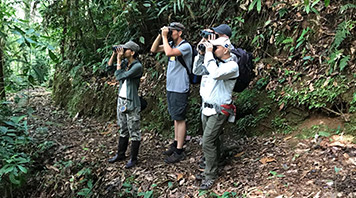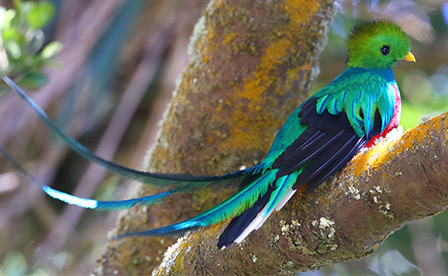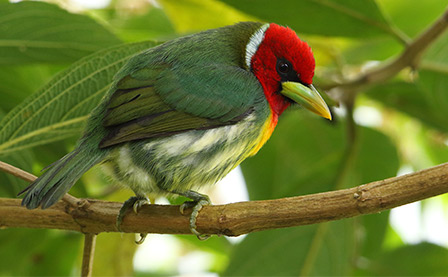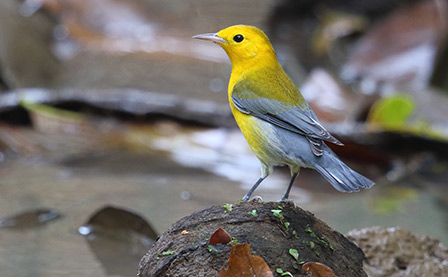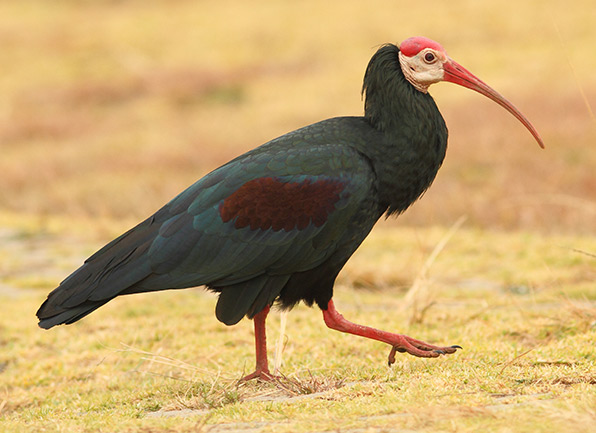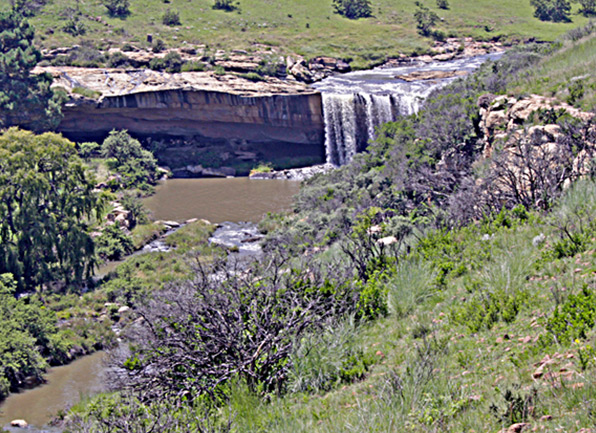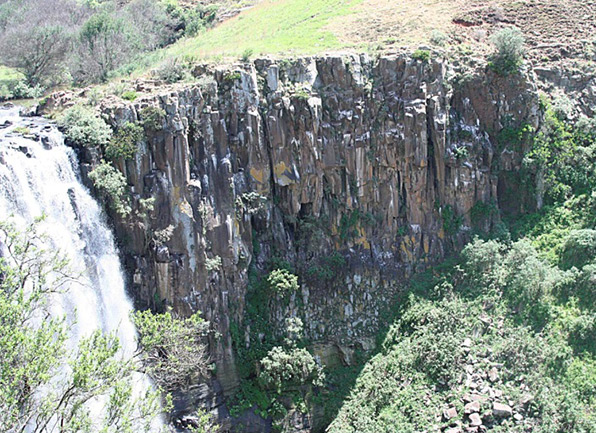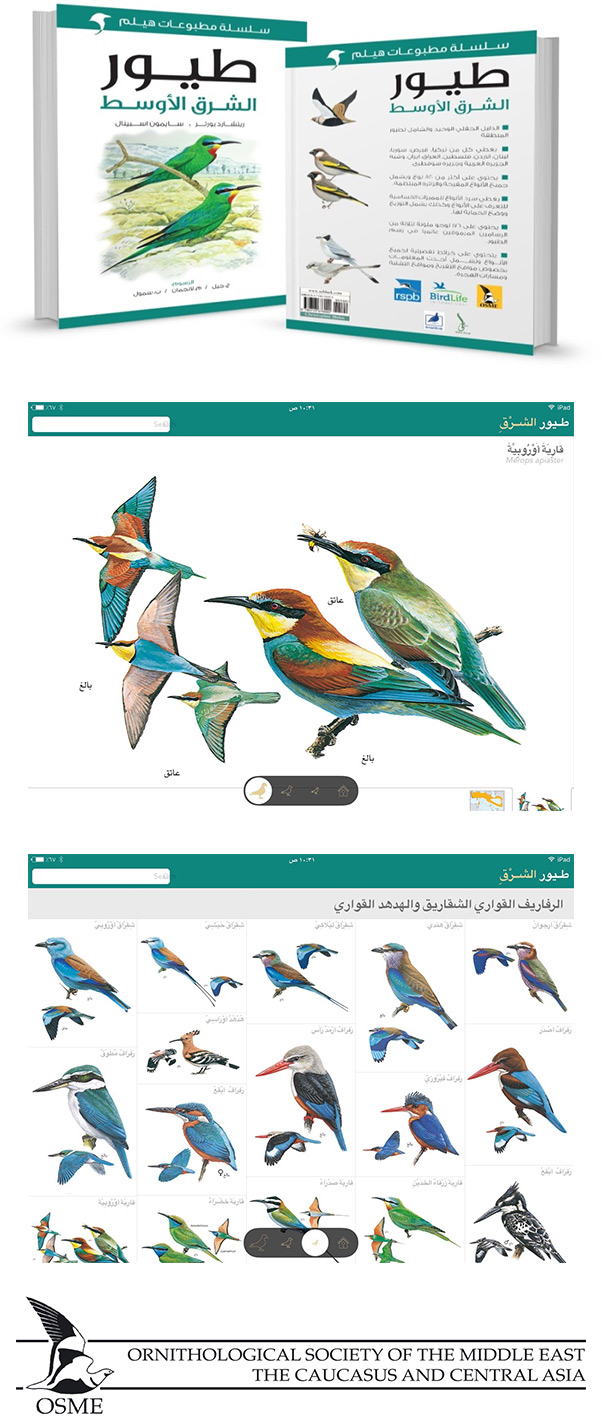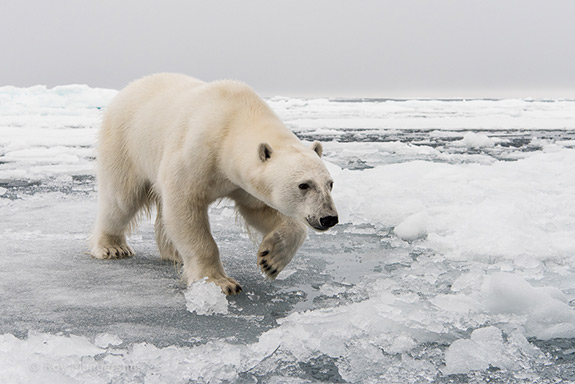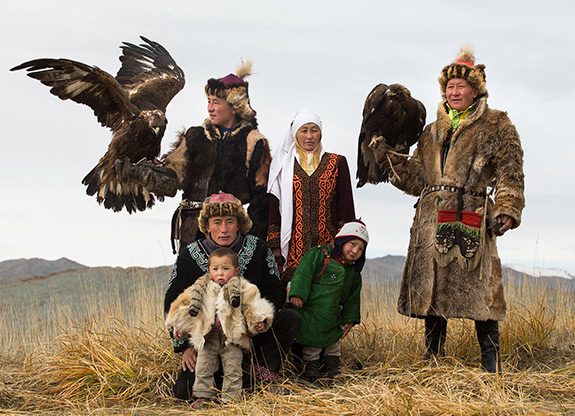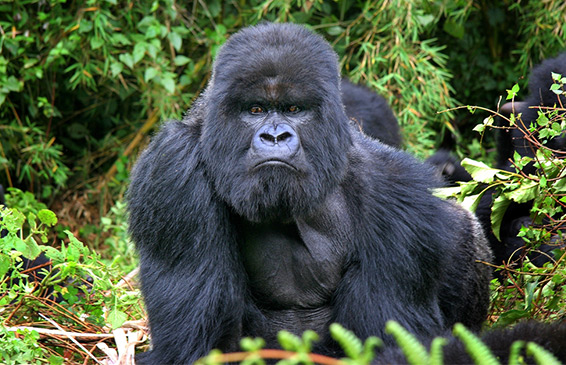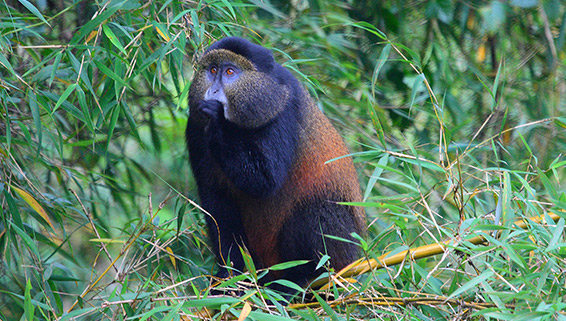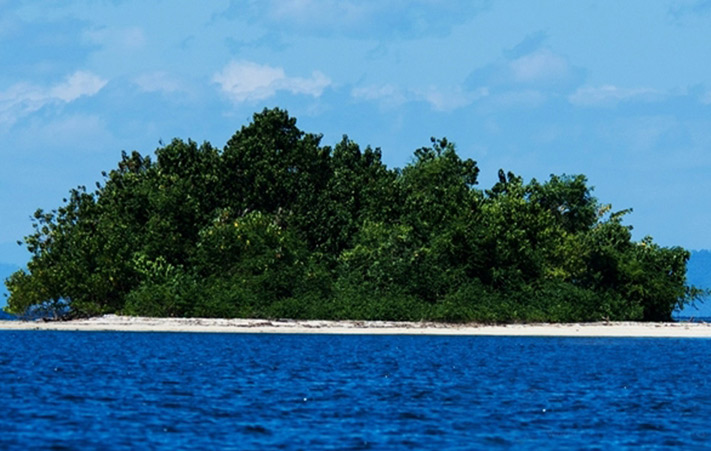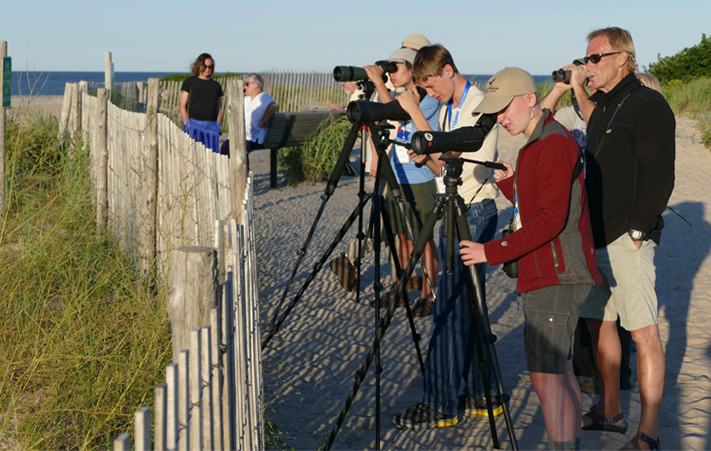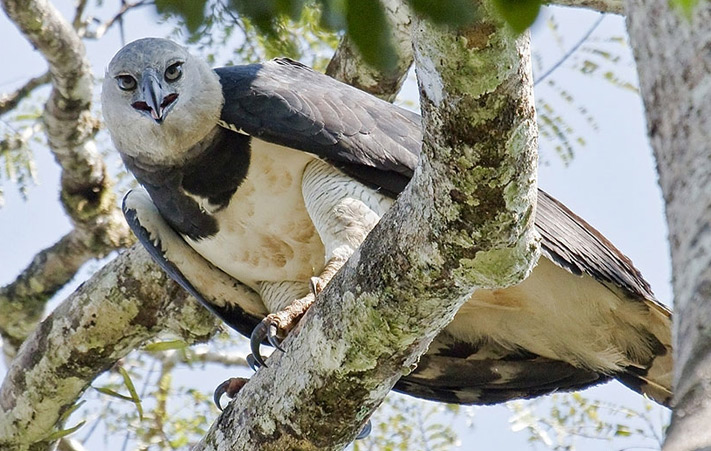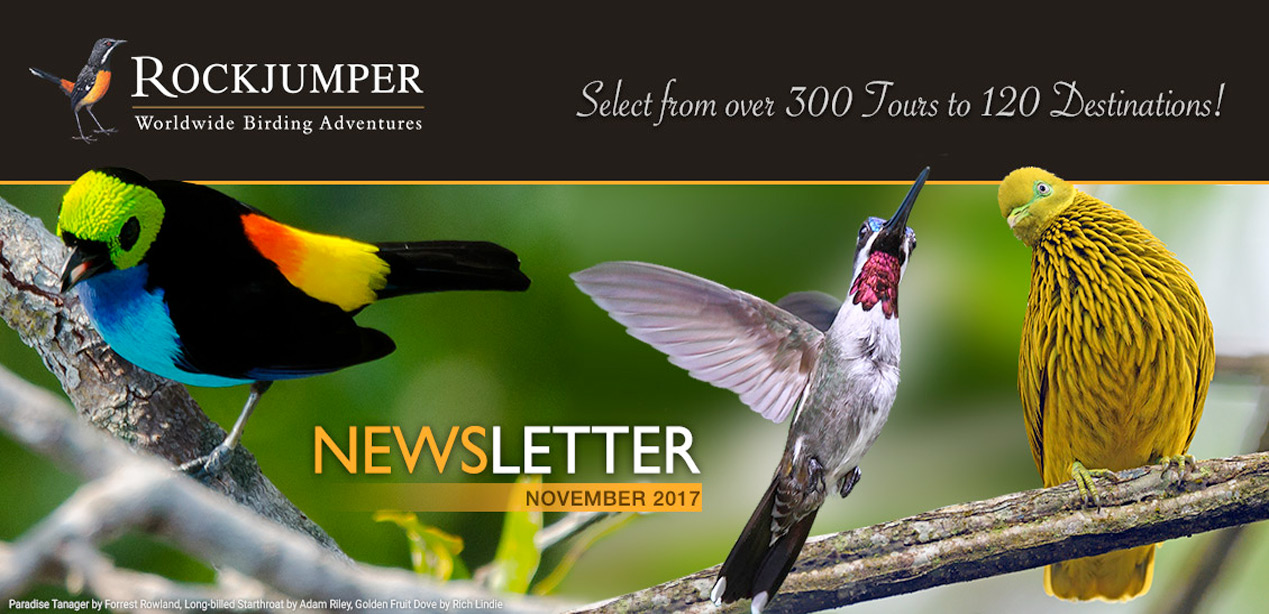
Dear Rockjumper Friends
Welcome to the latest edition of our quarterly newsletter. We hope you will enjoy hearing the news of what has been happening in the world of Rockjumper over the past three months. Besides letting you know about great sightings of late (and some amazing photos taken on our tours to boot), we are also proud to announce several major developments, including the opportunity to join us on a very special Antarctic charter, the launch of our Conservation Tours department, new team members, major conservation and community initiatives that we have supported and exciting new tours.
We wish you good health and great birding as the year winds down.
Yours in Birding,
Team Rockjumper
TEAM & COMPANY NEWS
At Rockjumper we are constantly innovating to ensure we are at the forefront of the bird tour industry thus being able to offer you, our valued clients, the best service, cutting edge tours and unbeatable offers. Read up about our exciting Antarctic charter (and don’t lose out on the 10% early bird booking discount), our new department, Rockjumper Go Travel Club, great additions to our staff compliment, and updates on our social responsibility and conservation initiatives and more…
Rockjumper is setting sail for Antarctica, and YOU are invited!
For the first time since 2008, Rockjumper has taken full control of an Antarctic charter! Scheduled to start on the 19th of October and end 19 days later on the 6th of November 2019, a team of Rockjumper Birding and ORYX Photographic tour leaders will join you aboard the very comfortable Akademik Ioffe. This is one of the best-rated small vessels out there, and is perfectly suited for our tour.
We start and end the charter in Ushuaia, and will explore the Falklands, South Georgia, the South Shetland Islands and, of course, the Great White continent itself, in between. Our voyage will be the first of the season, which besides offering pristine snowscapes and ice, will mean that we encounter displaying penguins and other breeding birds, as well duelling Southern Elephant Seal beachmasters (these giants are usually gone by late November, when most expeditions come south). However, the main reason for our early season departure is to maximise our chances of finding the holy grail of the Antarctic: the Emperor Penguin. We have designed our route to ensure we have plenty of time to explore the magnificent Antarctic Sound, and journey as far into the Weddell Sea as ice and weather conditions will allow, to search for the Emperors, and get as close as we can to their breeding colony on Snow Hill Island.
Just another advantage of this early season cruise is a lower cost structure, add to this a 10% early bird booking discount and you have an unbeatable offer on your hands. The cost per cabin category is below, and please contact us for our itinerary on this very exclusive Rockjumper cruise of a lifetime.
Twin Share: $13 950
Twin Semi-private: $15 950
Twin Private: $17 950
Superior: $18 950
Shackleton Suite: $20 950
One Ocean Suite: $22 950
*a limited number of 10% early bird booking discounts are available on all these cabin categories
Conservation Tour Department
Advancing bird conservation through our tours has always been a primary goal for us at Team Rockjumper. Besides contributions made to our own Rockjumper Bird Conservation Fund from each sign-up on our tours, we have also partnered with several highly dedicated conservation NGOs to assist them in raising revenues through trips for their members and supporters. To name a few, we have arranged tours for BirdLife International’s Rare Bird Club and with several other BirdLife partners too. Our popular American Birding Association safari series has been a great success, and we’ve enjoyed working with other great organizations such as Mass Audubon, African Bird Club, the Oriental Bird Club, the Ornithological Society of the Middle East, and many others. Soon we will offer a new suite of tours to incredible birding locations where the National Audubon Society has been on the ground protecting birds and training area residents in guiding, business and hospitality.
It really is a thrill for us to support these leading organizations in conservation and outreach.
With these and other prospering partnerships, we are now proud to launch Rockjumper Conservation Tours, a new department dedicated to engineering novel travel opportunities where participants actively promote conservation and responsible travel. When you register for a Rockjumper Conservation Tour, you will of course see staggering wildlife spectacles, but you’ll also have peace of mind knowing that you are helping advance the work of your cherished organization.
George Armistead and Karina Villalba are heading up this new division, and if you are involved in a conservation organization, they would love to hear from you. In the works already are trips to the Osa Peninsula of Costa Rica, the canal zone of Panama, the chaco of Paraguay, and the ruins, the coffee farms, and scenic lakes of Guatemala. We will seek Jaguars and Giant Anteaters in the Pantanal of Brazil, and make quick escapes to South America’s most iconic cities. Incredible birds and destinations await, and we would like to chat with you about how, together, we might make a difference in bird conservation. Contact George and Karina today at: conservationtours@rockjumperbirding.com.
Rockjumper Go Club
Are you able to travel at short notice? Are you only interested in hearing about guaranteed tour departures? Would you enjoy receiving last minute discounts?
Then join the brand new Rockjumper Go Club! There is no charge to join and you will receive monthly updates on guaranteed tours and special last minute discounts, some of them exclusively available to Go club members only.
Sign up now and discover more.
New Team Members

Rynart Bezuidenhout
Rynart Bezuidenhout was brought up in Pietermaritzburg, Rockjumper’s home base. Having always been adventurous, he started travelling immediately after completing his schooling, spending a number of years exploring continental Europe and the United Kingdom. Rynart returned to his beloved South Africa in order to follow his dream of becoming a professional game ranger/guide, whilst studying for a degree in Botany and Zoology. He has spent the last 3 years guiding from lodges throughout South Africa, further growing his passion for birding, wildlife and conservation. Rynart is now dedicating his experience and expertise in our industrious Private Tours Department.

Andrea Krusekopf
Andrea Krusekopf also grew up in Pietermaritzburg. After school, she studied to be a Paramedic before moving abroad to work at Summer Camps in the United States. She returned to South Africa and studied further in the fields of Event Management and Wedding Planning. Andrea spent the last four years crewing luxury yachts across the globe. Her time on these yachts provided her with the chance to travel extensively, primarily around the coastal United States and the many islands of the Caribbean, but also to other exotic destinations such as Lebanon, South Korea, Italy, France and the coast of Croatia. Her travels have sparked a love for learning and experiencing new cultures. Andrea has already made great strides in applying her strengths to the Rockjumper Team in assisting our ever-busy scheduled tour enquiry department.

Karina Villalba
Karina was born in the dramatically situated city of Quito, Ecuador. After finishing school, she obtained a degree in business administration. She has worked extensively in the tourism industry since the age of 19: running logistics and operations for tours to Africa and Asia, and working as the Operations Manager for Sacha Lodge, Ecuador for over a decade. She is an avid traveler and loves nature. Since 2012, she has been organizing Rockjumper’s tours to Ecuador, and we are excited to have her join us as a full-time member of our team in our brand-new Conservation Tours Department.

Keith Kopman
Keith was brought up in the small town of Howick in KwaZulu-Natal, South Africa. After finishing school in 2004, he went on to complete a 3-year Diploma in Travel and Tourism. When he started working in the tourism industry, he fell in love with making his clients’ dreams come true. That love has never dwindled, and he will continue this passion until retirement. Outside of work, Keith loves music and dancing and is a DJ. He also enjoys being outdoors and fishing. We know Keith will do a stellar job here at Rockjumper, and are excited to have him join the team. Keith will be filling a new role in our company as the International Flights Booking Agent for Rockjumper Guides and our guests!
Search for the Drakensberg Rockjumper
by Calvin Harris
Having recently joined the company, I was invited to join one of our Eastern South Africa tour groups going up Sani Pass to get an idea of what our guests expect and experience on a Rockjumper Birding Tour. This would ultimately help me in understanding my job better, so I jumped at the opportunity to join Andre Bernon and his group as they made their trip up the Drakensberg Escarpment.
The morning broke at a chilly lodge in Underberg, where the plan for the day was to set off for the mountain Kingdom of Lesotho, ascending the famous Sani Pass. For those who aren’t aware, Sani Pass is practically a rite-of-passage amongst South African 4×4 enthusiasts, due to the steep terrain and often challenging road surface.
After a few hours of carving up the switchbacks, we made it to the top of the pass. We were greeted with a spectacular view of South Africa and the smiling faces of the Basotho people. Our local guides wasted no time in getting us back in focus in order to start looking for the special birds of this alpine environment.
Within minutes of arriving at the crest of the pass, we saw a beautiful pair of Drakensberg Rockjumpers bouncing around the rocks and tussock grass bordering the Sani Mountain Lodge. Almost on cue, it seemed as though the birds popped out to welcome us to Lesotho. There was a sense of personal relief that I would be able to go back to the office and say that I had now officially seen ‘our’ bird.
Looking back, I had a fantastic experience that left me yearning to see more of our country – birding really does take you to fantastic locations both near and far.
It was a strong reminder of how much effort our tour leaders put in to each day to make the trip a success. Rockjumper’s tour leaders are the backbone of our business and can be the difference between a simply ‘good’ or ‘life-changing’ experience!
Arbor Day
by Megan Taylor
The first week of September is Arbor Week in South Africa. Team Rockjumper has had a year of settling into our new premises at Garlington Estate, and we decided it was time to leave an ecological mark on our surroundings: by getting our hands dirty and planting some trees.
We hit the ground digging in the early afternoon; and in a matter of 1-1.5 hours, had successfully excavated the ground and planted 10 Yellowwood trees. We planted 5 saplings of two different indigenous species: South Africa’s National Tree, the Real Yellowwood Podocarpus latifolious and the Outeniqua Yellowwood Afrocarpus falcatus. These evergreen coniferous trees are slow growing, but are important food sources to a number of bird and mammal species, including the declining, endemic Cape Parrot.
Our trees have had name tags added as part of our efforts to grow this initiative: to not only plant more trees, but also provide a resource to educate and create local awareness about the benefits of indigenous vegetation in our often drought-prone country. Clayton Burne found a fruiting Outeniqua Yellowwood nearby, and 30 seeds are now being nurtured for Arbor Week in a few years’ time.
Flufftail Competition
In our efforts to continually improve the environment in which we work and live, the Rockjumper Team have taken up the challenge of raising money to save the White-winged Flufftail from extinction.
The elusive White-winged Flufftail is only known to breed in one wetland in the world, in Ethiopia. Otherwise, it only occurs at a few scattered sites in South Africa. The most notable is Middelpunt Wetland, in Mpumalanga, where it spends a few months during summer each year. It is presumed that the Ethiopian birds migrate down to South Africa.
The White-winged Flufftail is listed regionally and globally as Critically Endangered, one step away from extinction on the red data listing hierarchy. The global population numbers are presumed to be fewer than 250 individual birds. This poorly-known flufftail has a highly fragmented distribution and is threatened by the loss of its wetland habitat. The funds raised will not only go towards protecting and rehabilitating its known habitats, but also towards funding the construction and maintenance of a research and captive breeding facility at the National Zoological Gardens in Pretoria. Conservationists now believe that the only reasonable hope of keeping this bird from slipping into extinction is to maintain a captive breeding population. Funding is urgently required for the construction and maintenance of this research and breeding facility.
Rockjumper has for many years supported the efforts of the Middelpunt Wetland Foundation and BirdLife South Africa, who are actively involved in trying to save the White-winged Flufftail from imminent extinction.
Our staff were split into four teams, with the idea that a competition will be a fun additional motivator in ensuring we raise the maximum funds possible.
We have seen fabulous results already, with the teams raising a cumulative total of R45,362.88 (US$3,218.32) for the cause since late-September. Our teams have until December 11th before the fundraiser ends, so if you would like to donate to one of our teams, please see below for details.
Team Adam
Funds raised to-date:
R28,489.08 (US$2,021.19)
Team Cuan
Funds raised to-date:
R7,408.46 (US$525.60)
Team Calvin
Funds raised to-date:
R5,223.00 (US$373.55)
Team Clayton
Funds raised to-date:
R4242,39 (US$300.98)
Marvelous Peru hosts not only a snazzy hummingbird or two, but magnificent Andean scenery. The million dollar question is, can we beat our Mega Colombia 1,000 species tour in Peru? We are also thrilled to announce our debut Family Birding Weekend in South Africa’s scenic Drakensberg Mountains.
In 2013, we released our ground-breaking Colombia: 1000 Birds Mega tour, planning to deliver over 1,000 species in under 30 days. Many wondered if this was even possible; but 27 days later, a trip list of 1,017 proved it was! This tour has been repeated many times since our inaugural departure, with numerous departures netting over 1,000 species and a few just short of the goal. Now we want to repeat this incredible bird mission in a different country. As one of the world’s most diverse birding destinations on the planet, Peru was the logical choice. Its spectacular and expansive scenery plays host to a bewildering variety of avifauna, replete with an impressive number of endemics and near-endemics.
Our Mega Peru tour begins in the Tumbes region of northern Peru, in search of Pacific Royal Flycatcher, Henna-hooded Foliage-gleaner and Tumbes Hummingbird. Quebrada Limon and Olmos will see us searching for Red-masked Parakeet, Necklaced Spinetail and Tumbes Pewee, as well as being the premier sites for the Critically Endangered White-winged Guan.
Heading eastwards, we climb Abra Porculla Pass to Jaen in search of Piura Chat-Tyrant, Bay-headed Brushfinch and Little Inca Finch. One of the most exciting prospects of our tour takes place in this region: where we have the chance to find Marvelous Spatuletail and Pale-billed Antpitta in a single day!
With a possible 600 species available in Iquitos, our hands will certainly be full with the amazing volume of new species. Just some of the highlights here could include Ancient Antwren, Allpahuayo Antbird, Iquitos Gnatcatcher, Rufous and White-winged Potoo, Pompadour Cotinga, Zimmer’s Tody-Tyrant, Zimmer’s Woodcreeper, Black-necked Red Cotinga, Dugand’s Antwren, Pavonine Quetzal and Crested Eagle.
With our successful exploration of the north behind us, we head south to experience the famed Manu Road – climbing to the highest parts before descending the eastern Andean slopes and birding through temperate zones and montane cloud forest. During our time here, we will search for Cerulean-capped and Yungas Manakin, Rufous-capped Thornbill, Crested and Golden-headed Quetzal, Blue-banded Toucanet, Spotted Barbtail, the outrageous Amazonian Umbrellabird, Chestnut-crested Cotinga, Inca Flycatcher, Saffron-crowned Tanager, Golden-eyed Flowerpiercer and Peruvian Piedtail.
Moving down the Rio Madre de Dios, we visit the overwhelming Manu Wildlife Centre, one of the most important biodiversity hotspots in the world. From mobile towers, clay licks, oxbow lakes and bamboo forest to an extensive network of trails, we spend several days tracking down Rufous-headed Woodpecker, Manu Antbird, Elusive Antpitta, Razor-billed Curassow, Pale-winged Trumpeter, Pavonine Quetzal, Purus Jacamar, Sunbittern, Sungrebe and Agami Heron, to name but a few! Other wildlife abounds, including 13 species of monkey and chances for Brazilian Tapir, Collared and White-lipped Peccary, and even Jaguar!
South African Birding Weekend
A Family weekend getaway for birders and non-birders alike
In association with BirdLife South Africa, Zeiss Optics South Africa and Champagne Sports Resort, Rockjumper Birding Tours is putting together an exciting Family Birding Weekend in February 2018.
The aim of this weekend is to offer a value-for-money, family-orientated break appealing to both birders, non-birding spouses and children. Calvin Harris, our Business Development Manager has this to say about what guests can expect:
“Here at Rockjumper, we are excited to offer, along with our industry partners, a tailor-made product to aimed all levels of birders and their families. We believe that a world-class destination such as the famous Champagne Sports Resort, situated in the Central Drakensberg, is perfectly positioned to offer a memorable experience for both birders and their non-birding partners alike. Champagne Sports Resorts boasts expansive grounds, home to a variety of sought-after bird species, as well as great facilities including sumptuous meals and arguably the best kid’s club in the country.
Guests attending our weekend can expect 4 bird walks lead by Rockjumper tour guides, informative lectures, and hopefully more than a few lifers, all in the comfort of a well-appointed resort. Our partners will also be on hand to discuss conservation projects, binocular product demonstrations and much more. At the same time, non-birding spouses or family members are free to enjoy the resort’s other excellent facilities, such as the championship golf course or incredibly relaxing salon.”
Enquiries can be directed through our website.
We look forward to sharing this experience with you and your family!
UPCOMING TOURS
We still have a few spaces available on a variety of exciting birding adventures bound for distant lands. All these are guaranteed departures and we encourage you to take a look at whats available, there’s something for everyone!
New Zealand – Comprehensive I 2018
Tour Dates: 05 – 21 Jan 2018 (17 days)
Tour Price (Per Person): NZD8,650 *USD6,037 *GBP4,581 *EUR5,114
Tour Leader: Erik Forsyth
Spaces remaining: 1
Our comprehensive New Zealand birding tour is designed to seek almost every possible endemic bird that has evolved on these far-flung islands, and to take full advantage of the region’s fantastic oceanic diversity. Under the expert guidance of New Zealand resident and long time Rockjumper tour leader, Erik Forsyth, we will be sure to explore as much of the North and South Islands, and those surrounding, in our efforts to build what is sure to be a fantastic trip list!
India: Southern – Birds & Wildlife of the Western Ghats I 2018
Tour Dates: 13 – 24 Jan 2018 (12 days)
Tour Price (Per Person): USD3,975 *GBP3,040 *EUR3,399
Tour Leaders: Holly Faithfull & Stephan Lorenz
Spaces until viable: 3
Southern India is a land of endless valleys, rolling forests and grasslands, breathtaking montane vistas, roadside temples and shrines. This scenery not only pleases the eye, but also plays host to a range of highly localised endemic birds, along with some truly special mammals. Just some of the top birds here include the odd-looking Sri Lanka Frogmouth, the gorgeous Indian Pitta, exquisite Malabar Trogon, Black-chinned Laughingthrush, Malabar Whistling Thrush, Heart-spotted Woodpecker, and the scarce White-bellied Minivet. Amongst the special mammals are Indian Elephant, Gaur (Indian Bison) and Smooth-coated Otter.
Join us for an unbeatable birding exploration to the southern part of this immense and extremely rewarding nation!
Cuba – Caribbean Endemic Birding III 2018
Tour Dates: 25 Jan – 03 Feb 2018 (10 days)
Tour Price (Per Person): USD3,250 *GBP2,476 *EUR2,754 *ZAR44,387
Tour Leader: Dušan Brinkhuizen
Spaces until viable: 1
Our time in Cuba will see us covering the wide variety of habitats, ranging from interior tropical forests and mangroves to extensive wetlands and the white sand beaches along the northern coral cays. As we explore, we will be targeting almost all 28 Cuban endemic birds, and a further 23 Caribbean specials, as well as some great wintering North American migrants.
Using the services of local bird specialists at each site, we guarantee an impressive success rate in observing the island’s amazing avian diversity. From the world’s tiniest bird (the Bee Hummingbird) to such sought-after species as Giant Kingbird, the cute Cuban Tody, the beautiful Cuban Trogon, Gundlach’s Hawk, Oriente and Yellow-headed Warbler, Zapata Wren and no less than four species of stunning quail-doves (including the fabulous Blue-headed, Key West and Grey-fronted), Cuba really is an absolute pleasure to bird. The incredible birding here is only aggrandized by the ease of travel, comfortable accommodations, fascinating culture and the friendly people. Our tours here are nothing short of remarkable!
Tour Dates: 16 Feb – 06 Mar 2018 (19 days)
Tour Price (Per Person): JPY795,000 *USD7,035 *GBP5,380 *EUR6,015
Tour Leader: Erik Forsyth
Spaces until viable: 1
The island chain making up the country of Japan is undoubtedly a must-visit destination for the keen birder and winter is a very special time here. We will explore the snow-covered fields, frozen lakes and rugged seacoasts of Hokkaido in the hope of marveling at the impressive Blakiston’s Fish Owl, magnificent Steller’s Sea Eagle, elegant Red-crowned Cranes, numerous species of sea ducks, loons and auks, and wintering passerines like the beautiful Asian Rosy Finch. The forests inland from Tokyo harbor the spectacular, endemic Copper and Japanese Green Pheasants, Japanese Accentor, Japanese Grosbeak and Japanese Green Woodpecker; while the hot springs at Nagano are famous for their ‘Snow Monkeys’. The extensive rivers and lakes on the Sea of Japan side of Honshu teem with waterfowl that include the immaculate Smew, Falcated Duck, Baikal Teal and the rare Long-billed Plover. The island of Kyushu plays host to one of the greatest avian spectacles on earth, with thousands of Hooded and White-naped Cranes spending the winter here along with other specialties like Brown-cheeked Rail, Chinese Penduline Tit, Saunders’s Gull and the superb Mandarin Duck. On the eastern side of the island, we will attempt to locate the near-endemic Grey Bunting and the endangered Japanese Murrelet, among many other exciting and memorable species. We invite you to join us on our unforgettable exploration of this Asian winter wonderland!
Morocco – Atlas to Sahara 2018
Tour Dates: 22 Feb – 04 Mar 2018 (11 days)
Tour Price (Per Person): EUR2,400 *USD2,839 *GBP2,136
Tour Leaders: Glen Valentine & Mark Beevers
Spaces until viable: 2
Our Moroccan birding tour begins in fabulous Marrakech, from where we will soon find ourselves winding up the snow-capped High Atlas Mountains away from the hustle and bustle of human activity. Woodland-cloaked slopes and alpine areas support North African endemics that include Moussier’s Redstart, African Crimson-winged Finch and Levaillant’s Woodpecker. After dropping down incredible mountain passes, we then reach the coast at Agadir, where we will search the nearby lagoons and estuaries teeming with waterfowl, waders and gulls. However, our main target is one of the world’s most critically endangered birds, the Northern Bald Ibis or Waldrapp – now restricted to two colonies in Morocco and a recently introduced breeding colony in Spain. Moving inland, the countryside gradually becomes drier until we reach the spectacular red sand dunes of Erg Chebbi, near the Algerian border. Along the way, we will search for specials including the rare Houbara Bustard, dainty Cream-colored Courser, Desert Sparrow, African Desert Warbler and larks, including Temminck’s, Thick-billed and Dupont’s.
Our tours to Morocco always impress, so be sure to join us for our next adventure here!
Tour Dates: 03 – 12 Mar 2018 (10 days)
Tour Price (Per Person): MYR11,750 *USD2,774 *GBP2,121 *EUR2,372 *ZAR38,095
Tour Leaders: Local Leader
Spaces until viable: 3
Borneo is the world’s third largest island, and typically conjures up images of a wild forest paradise where Orangutans, gibbons, broadbills and pittas roam the jungles. On this budget birding and wildlife tour, we will visit some of Borneo’s most famous birding sites: the fabled Mt Kinabalu, Tabin Wildlife Sanctuary, Sepilok and the Kinabatangan River. Habitats range from rich lowland and montane rainforest to productive coastal wetlands. A wide mix of highly sought-after, rare and endemic south-east Asian birds can be expected on this fabulous birding adventure. As if this wasn’t enough, it is also one of the best countries in Asia to enjoy rainforest mammals, and we can expect some incredible creatures, such as the afore-mentioned Orangutan, Proboscis Monkey, Bornean Gibbon, Mouse-Deers, Leopard Cat and, if we are very lucky, perhaps even Bornean Clouded Leopard!
This brief yet thorough exploration of this fantastic Asian destination is bound to be a brilliant, exotic blend of mouth-watering birds, mammals and scenery.
Colombia – 1,000 Birds Mega Tour I 2018
Tour Dates: 24 – 25 Mar 2018 (30 days)
Tour Price (Per Person): USD9,750 *GBP7,425 *EUR8,307
Tour Leader: Forrest Rowland
Spaces until viable: 2
Colombia birding is undoubtedly the most diverse and exciting birding destination on Earth. With two coastlines, four mountain ranges and a vast expanse of Amazonian rainforest habitats, one could spend years searching out all the natural wonders it holds. So, how many birds could one see in a month – 600 species? 800? On this intrepid tour, we expect 1,000 species of birds in less than a month – and we have already achieved this on SEVERAL occasions!! In our quest to accomplish this incredible feat, we will traverse all three Andean Cordilleras and explore the depths of the Magdalena and Cauca Valleys. From the white sand and terra firme forests of Mitu to the humid Choco, we will sample the richest rainforests in the country. Finally, from the dry Caribbean coast up lush slopes to San Lorenzo Ridge, we will enjoy the best of the legendary, endemic-rich Santa Marta Mountains. This Colombia birding tour is the most comprehensive offer available to experience the most biodiverse nation in the world!
If there are new tours to be unearthed, we’ll dig them up. Rockjumper adds to India & Ethiopia offerings. Somaliland and Iran are back on the map. And we offer an entirely new suite of tours to Mexico!
Tour Dates: 27 Jan – 19 Feb 2018 (24 days)
Tour Price (Per Person): USD7,450 * GBP5,684 * EUR6,349
Tour Leader: Heinz Ortmann
Ethiopia is hands-down one of Africa’s most productive and rewarding birding destinations! Our new 24-day Ethiopia Mega Birding Tour comprehensively covers this unique country, with every single endemic bird being targeted (Ethiopia boasts the second highest count of endemics on the continent). Over five-hundred species of birds and many rare mammals can be expected, and the ease of the birding is quite remarkable. Ethiopia is also one of Africa’s most rewarding photographic destinations.
Aside from visiting the more typical sites, such as the Rift Valley, high Bale Mountains, Jemma Valley, Awash National Park, Bogol Manyo and Yabello, our Mega tour takes in some very rarely-visited sites. The town of Mega in the far south hosts Masked Lark, Heuglin’s Bustard, Black-fronted Francolin, Donaldson-Smith’s Sparrow-Weaver, and Star-spotted and Sombre Nightjar; while our time at Kafka-Shiraro National Park in the very north of the country should reveal Demoiselle Crane, White-headed Babbler, Egyptian Plover, Sahel Paradise Whydah and Sudan Golden Sparrow.
Somaliland – Horn of Africa Endemics 2018
Tour Dates: 18 Sep – 1 Oct 2018 (14 days)
Tour Price (Per Person): TBA
Tour Leaders: David Hoddinott & Nigel Redman
If the words ‘exploratory,’ ‘intrepid,’ ‘adventure’ and ‘discovery’ get your blood flowing when it comes to birding, then Somaliland surely ranks high on your list of target destinations. For years this region has been marred by internal conflict; however, Somaliland (Northern Somalia, a previous British colony) has recently become safe for travel, allowing access to a remarkable number of endemics that were impossible to see.
These tantalizing endemics and near-endemics include the likes of Little Brown Bustard, Archer’s Buzzard, the rare Somali Pigeon, Somali and Collared Larks, Lesser Hoopoe-Lark, Somali Wheatear, Philippa’s Crombec, Somali Thrush, Somali Starling, Somali Golden-winged Grosbeak and the endangered Warsangli Linnet. These endemic birds are complemented by a rich assemblage of other sought-after dry country and savanna species, and include the likes of Heuglin’s and Arabian Bustard, White-cheeked Tern, Somali Courser, Somali Crombec, Red-naped Bushshrike, localized Sombre Rock Thrush, Blanford’s, Somali Short-toed and Short-tailed Lark, Greater Hoopoe-Lark, Yellow-breasted Barbet, Nile Valley Sunbird, White-crowned, Shelley’s and Magpie Starling, Somali Bee-eater, Yellow-vented Eremomela, Somali Sparrow and Northern Grosbeak-Canary.
We will also try for a few special mammals, such as Beira – a rather rare and little-known antelope, Speke’s, Soemmering’s and Dorcas Gazelle, Speke’s Pectinator, Caracal, Desert Warthog and Somali Elephant Shrew.
This is an area that has been little-explored, and every trip seems to produce something unusual, unexpected or new – reports of a possible unique species of cisticola and an interesting scops owl from the Daallo Forest show how much there is still left to discover. This is pioneering birding at its very best and, when combined with the influx of Palaearctic migrants, should make for a superb, bird-filled adventure!
India – Western Tragopan Quest 2018
Tour Dates: 28 Apr – 9 May 2018 (12 days)
Tour Price (Per Person): USD6,450 * GBP4,933 * EUR5,515
Tour Leaders: Adam Walleyn
Over a billion people call India home; one of the world’s richest cultural settings and a landscape that boasts a staggering geographical diversity. Situated in the far north-western corner of the country, we visit India’s newest protected area – the Great Himalayan National Park. This unexplored terrain of vast wilderness is one of the strongholds for a species that will be the primary focus of our quest – the Western Tragopan! Arguably one of the most attractive and sought-after of all the pheasants, with an estimated global population of only 2,500 to 3,000 individuals. Locals refer to this vivid pheasant as ‘Jujurana’, which translates roughly as “king of the birds”. According to local legend, the Western Tragopan was created by using the most beautiful and colorful feather of each bird in the universe.
A tough trekking tour, we will explore the mountainous terrain on foot, traversing exquisite trails and camping most nights in this unspoilt wilderness. While we search for our main quarry, we should also enjoy a supporting cast of many range-restricted species confined to the Himalayas, such as the iconic Himalayan Monal, the reclusive, long-tailed Cheer Pheasant, Bearded Vulture, Snow Pigeon, Long-billed Thrush, Wallcreeper, Altai Accentor and White-cheeked Nuthatch – amongst many others. Set in an unspoilt, beautiful series of valleys and ridges, this tour is set to reward even the most traveled birder.
Iran – Persian Birding Adventure 2018
Tour Dates: 2 – 15 May 2018 (14 days)
Tour Price (Per Person): USD5,650 * GBP4,321 * EUR4,831
Tour Leaders: Nigel Redman
Situated on the eastern edge of the Western Palearctic, Iran is not only a geographically diverse country, but also host to one the world’s oldest civilizations. This ancient country, formerly known as Persia, possesses over 20 UNESCO World Heritage Sites, the only Asian population of Cheetah, and a host of endemic and highly range-restricted bird species. Part of the once famous ‘Hippie Trail’, Iran’s poor western public image has hamstrung tourism to the country until recently. The Persian people are without a doubt some of the world’s friendliest and most hospitable!
Our fourteen-day tour starts in the capital, Tehran, with a short flight south to Bandar Abbas on the Persian Gulf. Here we will spend time investigating the mangrove forest around Jask, and the almond and pistachio woodlands and orchards around Minab for Sind Woodpecker, Graceful Prinia, Red-tailed (Turkestan) and Bay-backed Shrike, Afghan Babbler, Dalmatian Pelican and Crab-plover.
We depart Minab and head to Ahvaz for a few days to search the Dez and Karkhe River areas for Iraq Babbler, Grey Hypocolius, Hooded Crow (of the distinct Mesopotamian sub-species), Dead Sea Sparrow, Egyptian Nightjar and Menetries’s Warbler. Returning to Tehran, we shall spend the rest of our tour traversing the Alburz Mountain Range, the Caspian Sea and Touran National Park. Amongst the many species we can expect to see over the next few days, the highlights are sure to include Caspian Tit, Caspian Snowcock, Red-fronted Serin, Red-tailed (Persian) Wheatear, Black-headed Penduline Tit, Pleske’s Ground Jay, Asian Desert Warbler, Macqueen’s Bustard and See-see Partridge.
Tour Dates: 17 – 26 Apr 2018 (10 days)
Tour Price (Per Person): USD3,500 * GBP2,650 * EUR2,974
Tour Leaders: Chris Sharpe
Mexico, a land of stark contrasts, supports an enviable, endemic-rich avifauna – third only to Brazil and Peru in the New World. Home of the Mayans, Aztecs, Zapotecs and Spanish Conquistadores, Mexico is one of the most charismatic countries in the world. Maligned by a violent border with the United States, we have specially designed a suite of tours that will deliver the vast majority of the country’s endemics within the safer states of Colima, Michoacán, Veracruz, Oaxaca, Chiapas and the Yucatan. Our tours have been designed to run in sequential segments, allowing our guests to participate on one, two or all departures. With so many to select from, where does one start? Our Birding Among Volcanoes tour offers up to 35 Mexican endemics and 26 near endemics, whilst spending a good deal of time based in the Aztec capital of Tenochtitlan (Mexico City). However, it is our tour of the state of Oaxaca where we can expect to find the greatest birding diversity of all, with up to 45 Mexican Endemics and 20 near endemics.
Our comprehensive exploration of Oaxaca is jam-packed with specialties, taking in the major birding sites of Teotitlan del Valle, Benito Juarez National Park, Cerro San Felipe, the archaeological spectacle of Monte Alban and Huatulco. With a high level of endemicity, we set out to find dry interior endemics such as Ocellated Thrasher, Bridled and Oaxaca Sparrows, Boucard’s Wren, Dwarf Jay and the diminutive Dwarf Vireo. Cerro San Felipe is expected to reward us with Russet Nightingale-Thrush and the piercing Red Warbler – possibly one of the most attractive birds in all of North America. As we marvel at the iconic Monte Alban, we will also be searching for the endemic Slaty Vireo, Ocellated Thrasher and Blue Mockingbird. Our time in Huatulco will be spent birding the endemic-strewn Sierra de Miahuatlan for such delights as Long-tailed Wood Partridge, Blue-capped Hummingbird, White-faced Quail-Dove, Mexican Hermit, Long-billed and Plain-capped Starthroat, West Mexican Chachalaca, Citreoline Trogon and Red-breasted Chat.
As the tour draws to a close, we change tack and head out to the sea off Puerto Angel for a pelagic, with such headline species as the endemic Townsend’s Shearwater. We shall also be on the lookout for Christmas and Galapagos Shearwaters, Nazca and Red-footed Boobies and both the rare Black and Wedge-rumped Storm Petrels.
Our tour leaders are privileged to spend months in the most biodiverse corners of the globe and thus are constantly observing amazing birds and wildlife. The highlights certainly never seem to dwindle! Share in the excitement as they share with you a small selection of their favorite recent sightings!
André Bernon – Thick-billed Cuckoo
I recently completed the Cape & Kruger III tour within South Africa. We had had an amazing tour thus far, and our last day in the world-famous Kruger National Park had unfortunately already arrived. Our plan was to spend the entire day in the park; travelling from the center and exiting through a gate in the south. This paid-off in a “Big 5” way, with the group sighting the legendary “Big 5” before noon!
We made a stop on the large Sabie River bridge to stretch our legs and see what birds were about. Winter is the dry season here, and the combination of water and cool riverine forest on the banks is a major draw-card for a variety of animals. We spotted a large bird flying and perching atop a large fig tree. I was unable to contain my excitement, as everyone could tell, when I shouted, ‘Thick-billed Cuckoo!’. The views got even better as it flew straight towards us and crossed over the bridge behind our vehicle, landing on another large tree, this time even closer! We observed this notoriously difficult species for quite some time, as it proceeded to call too. As if this wasn’t enough, we bumped into an entire pack of African Wild Dog on our way out – complete with little pups! One of the world’s rarest and most endangered canids!
Dušan Brinkhuizen – Fiery-tailed Awlbill
Hummingbirds are awesome and I love them. My home, Ecuador, is a true paradise for these gems, with 133 species of hummingbirds recorded so far. One of the rarest species is the highly enigmatic Fiery-tailed Awlbill Avocettula recurvirostris, with only a handful of records in Amazonian Ecuador. The species seems to be fairly widespread in upper Amazonia – Ecuador, Brazil, Guyana and Suriname, but it is inexplicably rare and possibly local, seemingly restricted to a few scattered sites only. Furthermore, the Awlbill has a distinct upturned bill, like an avocet – making it a true prize bird. A few years back I tried to twitch a female that was discovered by Robert Ridgely in the lower foothills near Puyo, but I failed to find it.
In July this year, I led a tour to Cristalino Lodge, a top-notch destination for Amazon birding in Mato Grosso state, Brazil. Cristalino has distinct micro-habitats named ‘Serra’, with semi-deciduous forest on granite outcrops. This is where I finally connected with the species after more than a decade of Amazonia birding! Watching both a male and female foraging on flowers at close range was a blast! For a video of the male have a look on IBC.
Erik Forsyth – Maleo
My most exciting bird over the last quarter was my recent sighting of Maleo at Tambun, North Sulawesi. The park was established to help protect the breeding grounds of the terrestrial-dwelling Maleo, a unique member of the megapodes. I arrived in the park in the late afternoon after a six-hour journey; and with help from the local ranger and caretaker of the park, Max, we proceeded along the trails quietly and scanned carefully for my target. Several forest birds were seen, including Sulawesi Hanging Parrot, Black-billed Koel, Brahminy Kite, Sulawesi Serpent Eagle and a smart White-faced Cuckoo-Dove. Walking towards a hide area, Max suddenly said that he could see two Maleos near the hide; but as quick as I had looked, the birds had vanished. Max said that the birds arrive at the nest mounds from 16:30 in the afternoon, and so we climbed into the hide overlooking an open area in the forest and waited. At around 16:30, I noticed the unmistakeable shape of a megapode, 60 yards away through some trees. It took a few tantalizing seconds, which seemed forever – as the bird had disappeared behind a large tree. I needn’t have worried, as soon the bird re-appeared and I had good clear views of a male bird. Not before long, a second male appeared and I fired off a few pics. A huge relief swept over me, as you always fear it may not be your day. The following morning, I returned at 06:30am. Approaching the breeding grounds, 2 males could be seen, and a pair was noticed investigating a nest mound. To crown it off, a fifth bird was seen flying up into a tree in the forest! I need not have worried.
Forrest Rowland – Capuchinbird
The bird I most hope to see assigned its own family is undoubtedly the Capuchinbird. This bizarre, bald, behemoth member of the Cotingid family is unlike anything else on earth! Uttering its rolling growling cow-like calls, these huge balls of feather can be surprisingly hard to spot, as they sedately glean fruit and hide in the sub-canopy of Guianan Shield rainforests. We were lucky enough to have unparalleled views of this weird, yet attractive, species on our recent tour to the heart of Amazonian Brazil, out of Manaus. By far my number-one pick for Top recent sighting, and voted #1 bird of the tour by participants.
Gareth Robbins – African Spotted Creeper
I had seen an African Spotted Creeper in Angola a few years back. Unfortunately, it was a quick sighting, and I was not able to get a photo of the bird either! I recently came back from a visit to the eastern Highlands of Zimbabwe, where my luck changed when I was birding in Miombo woodland outside the town of Mutare. I had visited a few other reliable Miombo spots earlier on the trip but, unfortunately had not manage to find any bird parties, which is what one looks for when birding in the Miombo habitat. This all changed when I arrived in the middle of one! I was looking at Miombo Rock Thrush, Southern Hyliota and Miombo Double-collared Sunbirds at the same time, when suddenly, a spotted bird flew right past me at eye level. I knew instantly what bird it was, and managed to get a few photos of an African Spotted Creeper catching an unsuspecting spider on the side of a tree.
Jeremy Exelby – Pale Chanting Goshawk & a Cape Cobra
We all really enjoyed our recent visit to the Kgalagadi Transfrontier Park on the recently-completed Cape Wild Flowers: Birding and Big Game tour. Northern Black & Red-crested Korhaans showed off, a family group of Lion parked off for the whole day in the dry Aoub River bed and we lost count of the number of owls seen, both during the day and on the night drive.
Top ranking must go, however, to the encounter between a juvenile Pale Chanting Goshawk and a Cape Cobra. The bird was apparently more filled with curiosity than lethal intent, but the snake took the challenge seriously by raising and spreading its hood. Not long after, the cobra slowly slithered away, leaving the bird to find a more manageable meal.
Rich Lindie – Raggiana Bird-of-Paradise
My top recent sighting, for a change, is of a species I have already seen several times before. What’s more, is it’s not at all uncommon in the right habitats. Where it more than makes up for it, of course, is that it’s a bird-of-paradise – and a quintessential one at that – replete with spectacular plumes used for nothing more than impressing the opposite sex, and a dance to match. But the main reason my most-recent sighting of this species hit the top of my list is that, for the first time in my life, I got to enjoy several hours just watching and photographing a few of these wonderful birds, all in the company of my wife – for whom it was a first experience with any bird-of-paradise!
Wayne Jones – Heaviside’s Dolphin
At the tail end of a private western South Africa tour, we visited Port Nolloth and Alexander Bay in the far north-western corner of the country. We had successfully located our two main targets for the day – Barlow’s and Cape Long-billed Larks, and were driving past the beach at Port Nolloth when we spotted a small, dark shape leap out of the waves. It wasn’t long before we spotted blunt triangular fins breaching just beyond the breakers, identifying the creatures as Heaviside’s Dolphin, endemic to the west coast of Southern Africa. We watched these beauties jumping, playing and surfing in the break – just meters from shore! After half an hour or so, we had to move on – not that the dolphins minded; they just carried on frolicking! It was a delightful experience and one of the highlights of the trip.
Heinz Ortmann – Short-legged Ground Roller
My most recent top sighting was not a lifer, but nevertheless a top bird. The Ground Rollers are a family of birds comprising five species that are endemic to the island of Madagascar. Four of the species are found in the country’s rainforests; whilst the fifth is found in the dry spiny forest of the south-west. On our recent Madagascar Highlights I tour, we were fortunate enough to have great views and photograph the much sought-after Short-legged Ground Roller, one of the species found in the rainforests of this amazing and biodiverse hotspot. This specific sighting was all the more impressive, as during the winter months, when this tour took place, these rainforest dwellers do not call often and are much more difficult to find as a result. Needless to say, our fantastic local guide found this gem and it made it as one of the top sightings of the entire tour!
Glen Valentine – African River Martin
The African River Martin is undoubtedly one of Africa’s least-known and most mysterious birds. This “Holy Grail” of African birds breeds along the Congo and Ubangi Rivers in the Democratic Republic of Congo, and on sandy beaches along the southern Gabonese coastline, migrating over the extensive lowland rainforests of Gabon between these two breeding localities.
Until recently, this species had a near-mythical status, and had been seen by very few people, but is now known to be a regular visitor to certain parts of the spectacular Loango National Park in southern coastal Gabon. The species is currently placed in a sub-family of swallows known as the river martins – where it is one of only two members of this unique sub-family, the other being the White-eyed River Martin of south-east Asia that is now almost certainly extinct.
On a recent tour to Gabon and the Loango National Park, my group of intrepid birders were very fortunate to encounter around twenty of these strange swallows that performed extremely well in flight overhead, and at eye-level as they skimmed low over the water right in front of our boat.
Seeing such a rare and special bird as the African River Martin is a magical experience and is without a doubt one of my 2017 birding highlights.
Bonus Sighting: Clayton Burne – Knysna Warbler
Birding my local patch a few weeks ago turned up a major area rarity, two vocalizing Knysna Warblers! This species naturally occurs in dense, low vegetation, usually along watercourses of the southern Western Cape and Eastern Cape – and this was roughly 200km out of range for an apparently sedentary species. Endemic to South Africa, there may only be only a few thousand of these Vulnerable species left. Identifying the species by call was the easy part; but typical of the Bradypterus genus, the Knysna Warbler is a highly cryptic species that rarely shows itself, never mind for cameras. Needless to say, getting good views and a decent record shot was far more than expected!
2017 has seen some incredible success for our tours. Every year, we seem to up the standard set by those previous, and the following recounts prove that this hasn’t changed! Read up on some of our most recent and successful forays below.
Brazil – Birds & Wildlife of the Pantanal & Cerrado I 2017
By Dušan Brinkhuizen
Our classic Birds & Wildlife of the Pantanal & Cerrado I adventure of July 2017 was a trip of a lifetime. The number of spectacular birds, mammals and other wildlife seen on this trip was simply overwhelming. And not to forget the fantastic scenery available in all the different habitats that we traversed.
We started off in remote Amazonia, with the pristine jungle of Cristalino all around us. Our stay at this top-notch birding lodge was amazing both qualitatively and quantitatively, as we observed many species, including plenty of rare ones! The myriad of trails into pristine terrafirme forest produced exciting encounters, with species like Dark-winged Trumpeter, Cryptic Forest Falcon, Paradise Jacamar, Uniform Woodcreeper, Razor-billed Curassow, Amazonian Umbrellabird, Red-headed Manakin, Bare-eyed Antbird and Alta Floresta Antpitta. The trail up to the rocky outcrops with semi-deciduous forest was superb in terms of rare birds, with sightings of Spotted Puffbird, Zimmer’s Tody-tyrant, Natterer’s Slaty Antshrike, Southern White-fringed Antwren and a pair of Fiery-tailed Awlbill to boot! The two fantastic canopy towers surely completed our Amazon birding experience, with many canopy specialties seen at close range, including Brown-banded Puffbird, White-browed Hawk, Pompadour and Spangled Cotingas, White-browed Purpletuft, Kawall’s Amazon, Crimson-bellied Parakeet, White-bellied and Red-fan Parrots, Tooth-billed Wren, Red-necked and Ringed Woodpeckers, Black-girdled Barbet, Yellow-shouldered Grosbeak, Black-bellied Cuckoo and many colorful tanagers, toucans, aracari’s and no less than five species of macaw!
After our Cristalino adventure, we continued to the scenic Chapada dos Guimarães just outside of Cuiaba. In this exciting area, we enjoyed many of the cerrado specialties, including Black-throated Saltator, Shrike-like and White-rumped Tanagers, Curl-crested Jay, Helmeted Manakin, Blue Finch, Red-legged Seriema, Rufous-winged Antshrike, Chapada Flycatcher, Coal-crested Finch, Checkered Woodpecker, Least Nighthawk, Red-winged Tinamou and Yellow-faced Parrot.
Then we explored the amazing Pantanal forests and wetlands via the transpantaneira, where we enjoyed spectacular birds including Hyacinth Macaw, Jabiru, Maguari Stork, Southern Screamer, Nacunda Nighthawk, Long-tailed Ground Dove, Scarlet-headed Blackbird, Great Rufous Woodcreeper, Grey-crested Cacholote, Nanday Parakeet, Campo Flicker, Chotoy Spinetail, White-eyed Attila, White-fronted Woodpecker, Black-bellied Antwren, White-naped Xenopsaris, Stripe-necked Tody-Tyrant, Buff-breasted Wren and so forth.
The Jaguar, the prize mammal of the Pantanal, was seen incredibly well. Actually, we observed five different individuals in a single day! The two Jaguars that were being mobbed by a group of Giant Otters was our ultimate Pantanal wildlife experience!
We concluded the tour at the gargantuan Iguazú Falls, just across the border in Argentina. Visiting the most voluminous and, arguably, the most scenic falls in the world was a feat by itself, which we combined with birding the pristine Atlantic rainforest all around us. Some of the stunning regional endemics that we enjoyed here included Black-fronted Piping Guan, Spot-billed Toucanet, Surucua Trogon, Planalto Tapaculo, Bertoni’s Antbird, White-shouldered Fire-eye, Green-headed Tanager, Southern Antpipit, Ultramarine Grosbeak, White-rimmed Warbler, Chestnut-bellied Euphonia, Creamy-bellied Gnatcatcher, Plush-crested Jay, Greenish Schiffornis, Blue Manakin, Spotted Bamboowren, Black Jacobin and Buff-bellied Puffbird, to name a few!
Southwest Pacific Islands 2017
By Rich Lindie
This year’s tour of the Southwest Pacific islands proved, yet again, that not only is the region a must for any global birder, with almost 80 regional endemics seen in less than three weeks, but that it is also rapidly becoming a relatively hassle-free destination to travel through. Indeed, any itinerary to the region is still very much at the mercy of local flight schedules; and the speed at which things move, at times, is nothing if not unhurried, but the once notoriously unreliable flights seem a thing of the past, while all other services and facilities continue to improve. That said, the very charm of many of the islands is the underdevelopment of many areas, and we enjoyed relatively very little company while birding away from resorts and urban areas. Beautiful marine areas together with some wonderful forest and mountain scenery did their part to ensure a very varied and interesting tour, too!
Kicking off the tour in New Caledonia, we rapidly filled our lists with local and regional endemics, including the star bird of the tour for many, the incomparable Kagu. With seemingly more and more interest in family-collecting among world birders, tours to New Caledonia seldom fail to attract sign-ups as a result of this now very easy bird, several pairs of which have become habituated, thanks to a highly-successful recovery program within Blue River National Park. Alongside the Kagu, other highlights on Grand Terre included superlative views of Horned Parakeet, Cloven-feathered Dove, Goliath Imperial Pigeon, New Caledonian Crow, Red-throated Parrotfinch, Yellow-bellied Flyrobin and New Caledonian Cuckooshrike; while a short trip to Lifou Island yielded great views of both Large and Small Lifou White-eyes.
New Caledonia itself is also a fascinating sight, mixing a little of very typical Pacific culture and pace with all things French and modern. The latter, of course, being very evident as we moved progressively eastward through the Pacific.
The next stop in our adventure was Vanuatu, where a significant change of pace was the order of the day in many respects. For starters, we found ourselves lodging in blissful seclusion, on the shores of a very tranquil stretch of beach. Indeed, some of us watched a Dugong from the resort restaurant on one of our days there! We also enjoyed what would be the first of many relaxing afternoons off as a result of flight schedules, and some very easy birding throughout parts of the tour. On the easy birding side, we racked up all of the expected endemics on just our first morning in the country, including the truly DELIGHTFUL Buff-bellied Monarch and Vanuatu Kingfisher; whilst the second morning saw us securing great views of the final species – Vanuatu Megapode!
Making a few stops along the way, the third leg of our journey saw us birding three of the major islands within the archipelago of Fiji. There too, we enjoyed some lovely accommodations and some pretty easy birding, though a few tricky species did provide us with enough challenges to keep us occupied and on our toes. Starting on Taveuni, we were especially pleased to find that the Orange Fruit Doves appear to have returned to the main birding sites, after a recent tropical storm was apparently to blame for a lack of any sightings on last year’s tour. On top of multiple sightings of the dove, we also enjoyed great views of Fiji Goshawk, Yellow-billed Honeyeater, Maroon Shining Parrot, Fiji Whistler, Pacific Kingfisher and Azure-crested Flycatcher, among many other great birds.
On Kadavu, all of the local specials put up no fight at all – except for a Whistling Fruit Dove, which waited until the eleventh hour to put in an appearance – whilst a combination of a few birding outings on Viti Levu produced sightings of such goodies as Golden Fruit Dove, Masked Shining Parrot, Collared Lory, Many-colored Fruit Dove, Fiji Woodswallow, Giant Honeyeater and Fiji Parrotfinch, among several other sought-after species. Needless to say, some of the best food we ate on the tour was also consumed in Fiji, whilst we definitely enjoyed the most happy-hours there!
Our final stop, Samoa, was the shortest of all but by no means less productive than any of the others. For a change of scenery, literally, we found ourselves lodging in the clouds, overlooking some lovely scenery, replete with soaring White-tailed Tropicbirds and White Terns visible from our balconies, whilst birding forays around the island bagged us such sought-after species as Mao, Blue-crowned Lorikeet, Flat-billed Kingfisher, Samoan Starling and Red-headed Parrotfinch.
Alaska 2017
By Forrest Rowland
Nowhere in North America conjures visions of wilderness, vastness, and adventure like Alaska does. The 1.3 human inhabitants per square mile population density is evidence enough of just how wild a place like Alaska still is, especially since 70% of that tiny population lives in Anchorage. Our suite of tours through Alaska this year kicked off in one of the most remote areas of the whole state – Nome. Here we saw our first of more than 20 grizzly bears encountered, had excitingly close encounters with Musk Oxen and Reindeer, as well as locating all of our target bird species, with a healthy dose of surprizes thrown in. Best of the best of Nome were Ross’s and Slaty-backed Gulls, Arctic Loon, Emperor Goose, flight displays by Bristle-thighed Curlew, Lesser Sand Plover, Ruff, Grey-tailed Tattler, Red-necked Stint, Eastern Yellow and White Wagtails, several displaying Bluethroats, Northern Wheatear, and Gyrfalcon every single day we were there!
Our next destination was the volcanic Pribilof Islands, located well offshore, deep in the Bering Sea, where we were greeted by millions of nesting seabirds! We spent much of our time simply ogling and delighting in the antics of the myriad of cliff-nesting birds that congregate here to breed each year. Crested, Parakeet, and Least Auklets, Red-faced Cormorants, and the stunning Red-legged Kittiwake are among the more endearing of the species that we enjoyed. Of course, for North American birders, the possibility of Asian vagrants is a big draw to St Paul. We struck it big in this department, indeed! White-tailed Eagle, Black-headed Gull, Common Snipe, Olive-backed Pipit, many Hawfinch, and the biggest mega rarity of the tour – Marsh Sandpiper. The scenery, wildflowers, and fascinating Seal colonies make any visit to the Pribilofs unforgettable.
The main tour to Denali and the Kenai Peninsula was the most successful to date. So many wonderful experiences were had that I can’t possibly recap them all, from nesting Black-backed and Three-toed Woodpeckers, displaying Smith’s Longspurs, Spruce Grouse, and all three species of Ptarmigan, to Grizzly Bear sows with cubs right on the road. The spectacular Alaska range was the backdrop for a great number of these fabulous experiences along the Denali Highway; while the glacier-calved fjords of the Kenai Peninsula will always recall seeing 7 Pacific Humpback Whales in one day off Resurrection Bay! Ancient and Marbled Murrelets, Black Oystercatcher, and feeders covered in Pine Grosbeak and Red Crossbills near Seward were a few of the highlights. Sea Otters always top the mammal list by virtue of just how undeniably cute they are.
We ended our Alaskan adventure at the northernmost continental point in North America, Utqiavik (Barrow). This bleak, tundra landscape comes alive in Summer to host some of the Arctic’s most iconic species. Snowy Owl is always high on people’s wishlist, and we were treated to 5 individuals! This was an especially good year for these majestic white birds. It was also a good year for Eiders. King, Spectacled, and Steller’s Eiders all showed amazingly well for us, offering great photo ops, to boot! It was a great way to wrap up a wonderful time in the true wilds of America.
China – Sichuan & Yunnan 2017
By Glen Valentine
The provinces of Yunnan and Sichuan offer some of the very best birding in all of China and, quite simply, all of Asia! Our 2017 comprehensive Sichuan birding tour and pre-tour extension of Yunnan was as previous years’ trips: a mammoth success!
The birding and photography is simply superb, and this epic birding adventure takes in some of Asia’s most beautiful and pristine temperate forests and awe-inspiring landscapes.
This mostly wild and untouched part of China is undoubtedly the pheasant capital of the world, and we were delighted to encounter a staggering seventeen representatives of this handsome and classically Asian family; that included Snow Partridge, Tibetan Snowcock, Chinese Grouse, Verreaux’s Monal-Partridge, Mountain Bamboo Partridge, Temminck’s Tragopan, Chinese Monal, Blue Eared and White Eared Pheasants, the sensational Lady Amherst’s Pheasant and the outrageous Golden Pheasant!
Indeed, the number of rare and spectacular birds that were seen on this year’s unbeatable tour is truly mind-blowing and included a number of Asia’s most exotic and sought-after avian gems, such as the stately Black-necked Crane (up to 45 on one day!), Pere David’s and Himalayan Owls, Sichuan Jay, Brown-cheeked Rail, Upland Buzzard, Saker Falcon, the rare Long-billed Plover, Black and Darjeeling Woodpeckers, the little-known Chinese Grey Shrike, immaculate White-browed and Crested Tit-Warblers, the recently-described Sichuan Bush Warbler and Sichuan Thrush, the highly sought-after and monotypic Pzrevalski’s Finch (Pinktail), a number of laughingthrushes that included Snowy-cheeked, Barred, Blue-winged, Red-winged and Red-tailed, Emei Shan Liocichla, Beautiful Sibia, the rare and endemic Rufous-tailed Babbler (Moupinia), a staggering ten species of parrotbill that included Great, Three-toed, Brown-winged, Grey-hooded and Golden Parrotbills, Przevalski’s, Giant and Yunnan Nuthatches, the sensational Grandala, Chinese and Black-breasted Thrushes, the brilliant Firethroat, the rare and elusive Yellow-bellied Flowerpecker, endemic Slaty Bunting and a number of Rosefinches and Snowfinches, to mention just a few!
Coupled with spectacular scenery and outrageous birds, the trip also encountered an array of fabulous mammals, such as Chinese Serow, Hog Badger, Grey Wolf, Tibetan Fox and the extremely range-restricted Golden Takin.
Highlights of Africa Private Tour 2017
By Wayne Jones
After offering this trip for a couple of years with (surprisingly!) no takers, I was thrilled to have the opportunity to lead the tour this year, albeit in private form. The tour spanned four countries, with the option of a fifth – if the South African extension had gone ahead.
We began our exploration of Africa in northern Tanzania, arguably the world’s safari capital. First stop was the incredible Ngorongoro Crater, where we enjoyed views of Kori Bustard, Rosy-throated Longclaw, Quailfinch, Golden Jackal and Black Rhino. Next up was the Serengeti, where we’d timed our trip to coincide with the famous wildebeest migration. Along with thousands of Common Wildebeest we saw large numbers of other big game, such as African Buffalo, African Elephant, Thompson’s and Grant’s Gazelles, Hartebeest, Spotted Hyena and Leopard. We even witnessed a large pride of Lions hunting some flustered wildebeest. They were unsuccessful, but it was fascinating to observe the strategizing between the cats. We also checked off Serengeti specials like Grey-crested Helmetshrike, Grey-breasted Spurfowl, Tanzanian Red-billed Hornbill and Karamoja Apalis.
From Tanzania, we flew to Uganda, which has one of the richest bird lists on the continent. African Hobby, Black-and-white-casqued Hornbill, Great Blue Turaco and Grey Parrot were just some of the terrific birds seen in the middle of Entebbe! One of our first activities in Uganda was to explore the swamps lining the mighty Lake Victoria. It wasn’t long before we found our main quarry – a splendid Shoebill. The eye-poppingly bright Papyrus Gonolek was another delight, along with an array of waterbirds. Moving away from the shores of the great lake, we ventured into the western and south-western corners of the country. Kibale Forest Reserve and the legendary Bwindi Impenetrable Forest held many avian treasures, among them the diminutive Chestnut Wattle-eye, Fraser’s Rufous Thrush, Black-billed Turaco, Luhder’s Bushshrike, Equatorial Akalat and a male Bar-tailed Trogon. The undoubted birding highlight, though, was a stunning pair of Green-breasted Pittas, which we admired for almost ten minutes as they calmly went about their business. Uganda also has an incredibly high primate diversity, and we had sensational encounters with the two most sought-after species: Chimpanzee and Eastern Gorilla.
After spending the bulk of our time in Uganda, we wound down our African odyssey along the banks of the broad Zambezi River, where some were fortunate to see African Finfoot and Spot-necked Otter. In and around the town of Livingstone, we found Dickinson’s Kestrel, Long-toed Lapwing and African Pygmy Goose, and the guests tracked White Rhino on foot in Mosi-Oa-Tunya National Park. Of course, no expedition to this part of the world is complete without a visit to the incredible Victoria Falls, which we viewed from both the Zambian and the wetter Zimbabwean sides.
JH & CH: Southern Peru
Our guide, Rob Williams, was exceptionally well qualified, good humoured in all circumstances and remarkably diligent in accommodating all levels of birding skills within our group. He went out of his way to make sure that each member of the group realized their expectations for the trip. In short, we felt privileged to travel with Rob.
DH & RD: Papua New Guinea
The birds were magnificent, and when you combine this with the awesome guide combo of Adam Walleyn and the “Big G” (Gareth Robbins), it made for a once in a lifetime trip. Thanks again Rockjumper for delivering on a first-class birding experience.
Anon: Papua New Guinea
Adam Walleyn acted as a very experienced and skilful leader. He had an intimate knowledge of the birds and showed great skills in finding and showing them. His communication was extremely clear, to the point and flavoured with a good sense of humor. A role model of a tour leader.
PM & SM: Uganda
The tour met all of our expectations: in terms of sightings, accommodations, leadership and the magnificence of the country. Of course, we knew David Hoddinott and knew he would be superb. We loved it and appreciated David’s expertise and leadership.
RB: Gabon
Glen Valentine was great! His steady, unflappable leadership was the best and he got us on some terrific birds, never stopped trying, always looking. At the same time, he handled logistics very well and always with good humour. His enthusiasm for all things in nature and thoughtful attentiveness to the group made this trip special.
JW & MW: Malaysia & Borneo
We felt that the trip was very well organized and efficient so we could spend as much time in the field as possible. Glen Valentine was a terrific guide – excellent birder, as well as his concern that everyone was seeing the birds. Glen was very even in his manner at all times and with everyone.
EG: South Africa: Cape Wildflowers
Jeremy Exelby was fabulous – great general natural history knowledge and laid back attitude.
MA: South Africa: Cape Wildflowers
Jeremy Exelby’s botanical skills were excellent.
RA & MA: Namibia, Botswana & Zambia
Greg de Klerk is an excellent birder and worked hard to find as many species as possible, and also to make sure that everyone saw them. He was very genial company and took great care of everyone.
MM & EM: Namibia, Botswana & Zambia
Greg de Klerk is an excellent guide with great people skills. We appreciated him very much.
WB & BB: South Africa
The lynchpin for our entire experience was the guide – and Greg de Klerk was simply brilliant. He was extremely skilled in knowing where the birds might be, and finding them once we got there. He carefully made sure that we all saw the bird. He was very knowledgeable about bird and mammal behavior, and shared a lot of information with the tour members. He smoothly handled logistics, is a good driver, and patient with non-nationals who are unfamiliar with South African customs. He has a wonderful sense of humor; and a very warm and outgoing personality, which stimulated good relations between tour members. We would be very excited to go on another Rockjumper trip with him!
SL: Brazil – Manaus
A fantastic inaugural tour of the Manaus area. As usual, rainforest birding presented its challenges, especially all those skulkers, the names of which invariably begin with ant-! However, our brilliant leader, Forrest Rowland, and his equally brilliant offsider and local guide, Brad, showed endless patience trying to get everyone to see as many species as possible – with almost 500 spp seen in 17 days! We visited a variety of habitats in addition to terra firme forest, including varzea, campinarana and riverine islands, each with a different suite of birds. The trip went off without a hitch with efficient van and boat transport, comfortable accommodation and delicious local food.
LG: Sulawesi & Halmehera
David Erterius is above all patient, with the birds, with the participants and the local guides. He very modestly shares his incredible knowledge of the birds.
We are always seriously impressed by the quality of events we attend. And the ones we’ve been to recently only fortify that belief! So grab an update on some of our favorites.
British Birdwatching Fair
When it comes to birding events, none compare to the British Birdwatching Fair. Just outside of Rutland, England, with numbers approaching 25,000 attendees – the event almost boggles the mind. Once the madness of spring migration has passed, you start to hear the question… “Will we see you at Birdfair?” For Team Rockjumper, the answer is always an enthusiastic “Yes!”
This August past, Rockjumper founder Adam Riley was on hand, as always, with Rockjumper staffers including managing director Keith Valentine, Holly Faithful, George Armistead and Forrest Rowland. There was never a dull moment! Birdfair founder Tim Appleton and his amazing team hit a new single-day record for attendees, with attendance throughout the whole event being off the charts. With its 30-year anniversary right around the corner, the ceiling for this already amazing event seems to grow with each year. Save the date for 2018, and come by the Rockjumper booth at Birdfair from 17-19 August.
American Birding Expo
Now in its 3rd year, the American Birding Expo moved to the City of Brotherly Love, Philadelphia, from September 29th– Oct 1st in 2017. Not only the birthplace of the USA, this is also the site that gave rise to ornithology in the US. Among many others, ornithologists like Alexander Wilson, James Bond, John Cassin, and John James Audubon all lived here, even working some of the same sites visited by Expo attendees. Audubon’s home at Mill Grove, right by the Expo center, provided some great nearby birding, as did Valley Forge, Heinz National Wildlife Refuge, the Militia Hill Hawkwatch, and the Wissahickon Valley. Based at the Greater Philadelphia Expo Center, the American Birding Expo enjoyed visits from thousands of birds from up and down the East Coast, and from much further afield as well. Exactly 108 exhibitors from no less than 38 countries were on hand to welcome the hundreds of attendees. Mark your calendars for 2018, when the Expo returns to Philly from 21-23 September.
Pennsylvania Society of Ornithology
In Carlisle, Pennsylvania, this past September, the Pennsylvania Society of Ornithology held their annual conference. Birding Magazine’s Ted Floyd was the keynote speaker and also assisted on the field trips. A variety of field trips were enjoyed by attendees, and PSO members tallied great birds, including a nearby long-staying vagrant Roseate Spoonbill, a variety of autumn warbler species, and a nice nocturnal flight of songbirds the first evening of the conference. Among the many friends gathered were three students: Josh McCoy, Paul Heteran, and Carl Engstrom. Rockjumper was honored to support PSO and its dedicated young birders by providing these 3 Youth Birder Scholarships. We look forward to seeing what’s ahead for these bright young birders!
Costa Rica Bird Challenge
Adam has recently returned from the inaugural Costa Rica Bird Challenge. Arranged by Serge Arias and funded by Futuropa and the Costa Rica Tourist Board, this 8-day race showcased a small sample of the avian treasures of the country. 13 birders from around the world were invited to participate and were divided into 3 teams, each with a local leader. Adam’s team included Jim Lawrence of BirdLife International, Jonathan Meyrav of the Israel Ornithological Centre and Yeray Seminario, hailing from Spain, and were ably guided by star local guide Diego Quesada.
5am on October 12th saw all the teams rush out of their hotel in San Jose. They had a route to follow, and lunch and dinner times to adhere to but, otherwise, free reign to find as many species as possible (each had to be seen or heard by one team member and verified by the local guide). Adam and his team kicked off by heading into the highlands around Poas Volcano, scoring such goodies as Black Guan and the uncommon Black-and-yellow Silky-flycatcher. Breakfast was had at a small, local restaurant that attracted both birds and birders with its hummingbird and fruit feeders. Here, they were treated to amazing views of the endemic Coppery-headed Emerald, a variety of other hummers and both Red-headed and Prong-billed Barbets – truly remarkable creatures. Dropping down into the lowlands, they connected with the first raptor migration spectacle: at least 20,000 Broad-winged Hawks in a fast-moving, seemingly endless river overhead! An estimated 5 million raptors migrate over Costa Rica at this time of year, the most voluminous raptor migration in the world – an unbelievable spectacle! And this was all before lunch on day one of the race…..!
Habitats change fast in Costa Rica; and by lunchtime, they were in the lowlands of Selva Verde, finding a plethora of new birds for their list. Adam’s team, the Tico Tickers, ended the day one with 173 species – only 11 ahead of the next team, so the pressure was on. Each of the next 7 days had them out in the field, visiting amazing reserves and finding incredible birds. Their time in Costa Rica ranged from birding Caribbean and Pacific coastlines, to hiking in both lowland rainforests and cloudforests right to the tree line of high volcanoes, to watching tens of thousands of raptors rising from the rainforest in as they caught thermals to continue their migration, and even boat trips through the coastal mangroves.
The space available here is far too short to give justice to the birding highlights; but stars included a stunning male Resplendent Quetzal – arguably the New World’s most decadent bird – a variety of impressive owls, such as Crested, Spectacled, Costa Rican Pygmy and Bare-shanked Screech, healthy numbers of Great Green and Scarlet Macaws, close encounters with the rare Red-fronted Parrotlet, the amazing Snowcap and numerous other hummers, a wonderful array of migrant warblers (including over 30 Prothonotaries bathing together in the mangroves) and wonderful tanagers and other tropical gems!
The Tico Tickers hung onto the lead from the first day, and won the race with an unbelievable 488 species under their belts. But it was a tight victory, with the other teams just 10 and 12 species behind on the final tally! Costa Rica truly is the Bird Republic!
Attending amazing events with equally amazing, like-minded people is definitely one of the perks of what we do. Read up on the upcoming events we are chomping at the bit to attend! Hopefully, we’ll see you there too.
Festival of Cranes, Space Coast & Morro Bay
Approaching its 30th year, the annual Festival of the Cranes, based outside world renowned Bosque del Apache National Wildlife Refuge in New Mexico, is coming up from 17-19 November. If you like seeing droves of thousands of Sandhill Cranes and are in the area, visit with Ric & Betty Zarwell at the Rockjumper booth. And keep an eye out for them January 24-28, 2018 in Florida at the Space Coast Birding Festival too, near Merritt Island National Wildlife Refuge. Both Festival of the Cranes and Space Coast Birding Festival offer stunning opportunities for photographers, and the Zarwells will have information on our sister company Oyrx Worldwide Photographic Expeditions. Also, in January 2018, the Morro Bay Winter Birding Festival is on, where George Armistead will serve as keynote speaker, giving a new talk titled “My Ornithologist: The Unique Life of the Birder”. If you are birding central California this January, join the vibrant California birding community for this fantastic birding festival.
We are always seeking outstanding conservation initiatives to support, as well as productive and dedicated conservation partners with whom we can help make a difference to birds and birders in our community. Here’s what’s been happening over the past few months.
Camp Avocet for Young Birders
This August, our friends at the American Birding Association convened the annual Camp Avocet, and Rockjumper served as a proud sponsor. Aged 13-18, American birding’s most dedicated teenagers from all over the country got together to study a variety of topics. Led by a team of expert instructors, campers based in Delaware covered a lot of ground. Avocet hit five states in seven days, visiting world-famous wildlife refuges; and campers built on their ID skills while learning about careers in ecotourism, outdoor education and conservation biology. One camper’s parent wrote after camp, “I just wanted to say thanks to you and your team for last week’s excellent camp. Hayden came home feeling very inspired by his experience, and I was getting texts all week with the latest “lifer” report. It was also nice for him to connect with other young birders.” Rockjumper’s George Armistead was also in attendance during the camp to contribute his expert guidance to these young birders, and can be seen on the far right of the group photo. Read more on the blog here.
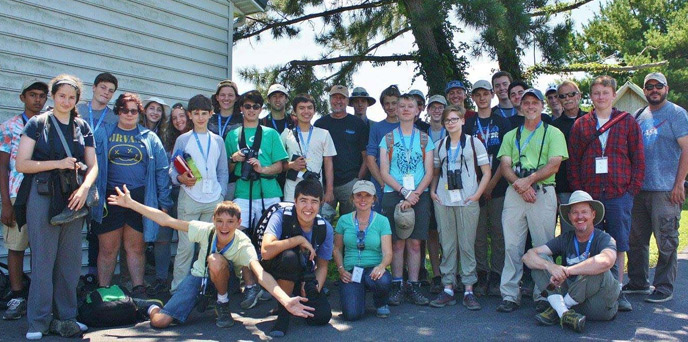
The future of birding, American Birding Association’s 2017 Camp Avocet,
outside Richard Clifton’s studio. (Photo courtesy of ABA/Richard Clifton)
Wakkerstroom Southern Bald Ibis Project
The Wakkerstroom Southern Bald Ibis Project has been in place for the last 20 years. Groups of volunteers monitor all the breeding colonies of these stunning and range restricted birds (classified as Vulnerable by IUCN) around Wakkerstroom in eastern South Africa. Each colony is visited 5 or 6 times over their three-month nesting period. Rockjumper has for the past seven years covered fuel and other costs of these dedicated volunteers, and the project would have folded if it hadn’t been for our support. Here is what the founder of the project has to say:
When I was introduced to the colonies, we went to look at them in late July or early August as they are/were late-winter breeders. However, for whatever reason, the breeding started later and later each season, with us still visiting colonies in early November. Then last season, when we made our first visits to the colonies in mid to late August, most colonies were already nesting or even had tiny chicks, very much in line with the earlier years. It was a very successful breeding season at all colonies, even though the previous summer had been very average in terms of rainfall.
This year, in early September, there was not a bird in sight at any colony visited; however, the past few weeks have revealed birds on nests and others building, so things have got going – at last! This means that chicks will only be fledging around November.
So now we wait and see what this breeding season will bring for the Southern Bald Ibises.
All the monitors are eternally grateful to Rockjumper Birding Tours for the donation we have received for the past number of years, which at least pays for the fuel used – the colony in Vryheid is a round trip of 220 km and Kalkoenkrans is 170 km round trip, so it is a very big help – thank you so much.
OSME’s Birding App for the Middle East
Rockjumper have long been Corporate Sponsors of the Ornithological Society of the Middle East, the Caucasus and Central Asia, and we are delighted to have donated £1,000 to ensure the success of their free Middle East bird app project. We feel that even if one person could be channelled away from extremism to birding as a result of this birding app which will be freely available and widely distributed throughout the Middle East, then our donation would have paid off enormously! More on the project from OSME:
The launch of the Arabic Version of the Birds of the Middle East in March 2017 was the culmination of many years of dedicated work by those who saw the book as making a significant contribution to celebrating the diversity and variety of the birds of the region.
The next logical step after the publication of the book was to develop an App suitable for Android and Apple formats. Whilst the book was a partnership effort led by Bird Life Middle East, this time OSME is taking the lead to finance and produce the App.
Calls and songs of all the species that are available will be added to create a ‘must have ‘product that would be made available for free download to any smartphone or tablet. We believe this could be the first ‘Bird Identification App’, if not the first Natural History App, anywhere in the world in a language other than English.
Anecdotal evidence from those in the Middle East convinces us that this approach will reach a far greater audience, particularly younger people and those just casually interested, thus beginning to build a far wider community who care about their birds and, most importantly, their birds’ future.
The app is still being built, but it aims to be a high-quality product, meeting the expectations of a very tech savvy community; it aims to have easy navigation and be full of rich content.
We plan to launch it simultaneously on both the Android and Apple platforms. The launch should undoubtedly take place in the Middle East, as this is for the people of the region. We would anticipate a launch in the early summer 2018.
In Summary, the App will:
- Make a considerable contribution to the understanding, recording and conservation of birds in the Region.
- Be a wonderful educational tool.
- Manifestly be a celebration of the Region.
- Be modern and accessible to all.
- Be non-political, non-religious, crossing all national boundaries.
ORYX rocks for Rhinos and new adventures ahead for Rockjumper Wildlife Tours as we set out after Mountain Gorillas and Golden Monkeys.
ORYX Photographic Expeditions
This August saw ORYX celebrating its 7th birthday, bringing us great pride to see how we have matured in terms of destinations we offer, talented new photo tour leaders and staff members joining our team, and the loyalty of our clients – old and new! We foresee our growth continuing as we constantly strive to ensure ORYX is at the forefront of luxury experiential and photographic safaris worldwide.
It seems things do indeed get better with age!
From Gorilla trekking in the Virunga Mountains of Rwanda to the Great Wildebeest Migration in Kenya’s Masai Mara, from cruising the Svalbard coastline for Polar Bears to a culture-enriching expedition in Ethiopia’s Omo Valley, ORYX is fast filling up pages in its passport! In just a short span of the last 3 months, we hosted 18 tours in 12 countries on 6 continents.
Photo safaris to the Pantanal in Brazil were deemed popular this year, as we successfully hosted two back-to-back sold-out tours, and we also opened up a second departure to Savute and Khwai in Botswana. Apart from our regular tour offerings, we ran our debut bird photographic tour to Papua New Guinea, guided by birding photo tour leader Rich Lindie. Also new was our Alaska safari, aimed at capturing the Grizzlies fishing in Katmai National Park, with tour partners Wild Photo. Our newest tour offering for 2018 will see ORYX basking in the splendour of volcanoes, ice caves and Grizzly Bears on Russia’s Kamchatka Peninsula with photo tour leader, Penny Robartes.
Kirsten Frost spent a glorious 40 days and 40 nights in the Mara during August as a photographer-in-residence at Alex Walker Serian’s Nkorombo Camp, where he and Penny Robartes now host our two 2018 Kenya – Best of the Mara Migration Photo Safaris. ORYX attended Wild Shots in Cape Town, a wildlife photography symposium that featured guest speakers from throughout the world, including our very own CEO, Marius Coetzee.
We are happy to report that, so far, we have donated more than US$12,800 to Rhinos Without Borders, a conservation project that aims to translocate over one-hundred rhinos from high-risk poaching areas in South Africa to the comparative safety of Botswana. A percentage of our profit from each ORYX Photo Tour and Safari always goes towards our conservation fund, and we are delighted and humbled to help in protecting our rhino population for future generations.
As the year draws to a close, we can reflect back on it with pride and confidence, knowing we’ve made our clients’ photographic dreams come true. We look forward to extending our horizons with you in 2018!
Rockjumper Wildlife Tours
The Rockjumper Wildlife team has been rather busy over the past few months, with a number of private tours on the go. These have included a family trip through Kenya, where the group was entertained by a wonderful variety of the region’s iconic wildlife; a private South Africa and Namibia exploration, and another private South Africa tour for a large NGO. We are also very pleased to be able to confirm that our incredible Madagascar and Ethiopia tours in November and December are both guaranteed departures with small groups of 4 people. We do still have space on both of these exceptional tours, so please feel free to e-mail us at info@rockjumperwildlife.com for more details on what are sure to be fabulous experiences.
Looking further ahead to 2018, we are pleased to inform you that almost all of our 2018 departures now have firmed up prices. We are also currently working on a few new exciting tours through beautiful Sri Lanka and the magnificent Serengeti and Ngorongoro Crater in Northern Tanzania. We are now also offering our Rwanda tour as an extension to both our classic Kenya & Tanzania – Mega Mammal Safari and the new 11-day Northern Tanzania departure. Rwanda offers a wonderful way of ending off an East African Safari, as you explore the stunning Volcanoes National Park for Mountain Gorilla and Golden Monkey. From 2018, we also have a brand new upmarket Madagascar offering that uses charter flights to access the region’s superb national parks and reserves. This itinerary also takes in the truly spectacular Anjajavy Private Reserve, home to numerous lemur species and a plethora of birds and other wildlife. A visit to this scenically spectacular part of the country is definitely something to behold!
We look forward to welcoming you on one of our carefully-crafted wildlife tours.
We have one of the best birding blogs out there! Read up on an accessible Harpy Eagle nest in Ecuador, our youth birding sponsorship of ABA’s Camp Avocet and one of our most recent tours to Papua New Guinea.
Papua New Guinea –
Birding in Paradise
Youth Birding –
The ABA & Rockjumper at Camp Avocet
Harpy Eagle Nest
in Ecuador
Thank you for taking your time to learn about Rockjumper’s latest exploits and upcoming plans. If you enjoyed what you saw here, we hope you’ll tell your friends about us. And always… always, feel free to drop us a note or give us a call. We’re here to help.
Contact us today, and discover more.
Yours in Birding
The Rockjumper Team
Thanks for reading! If you enjoyed this, we hope you’ll consider sharing this newsletter with your friends too.
*Alternative prices are for comparative purposes only.
